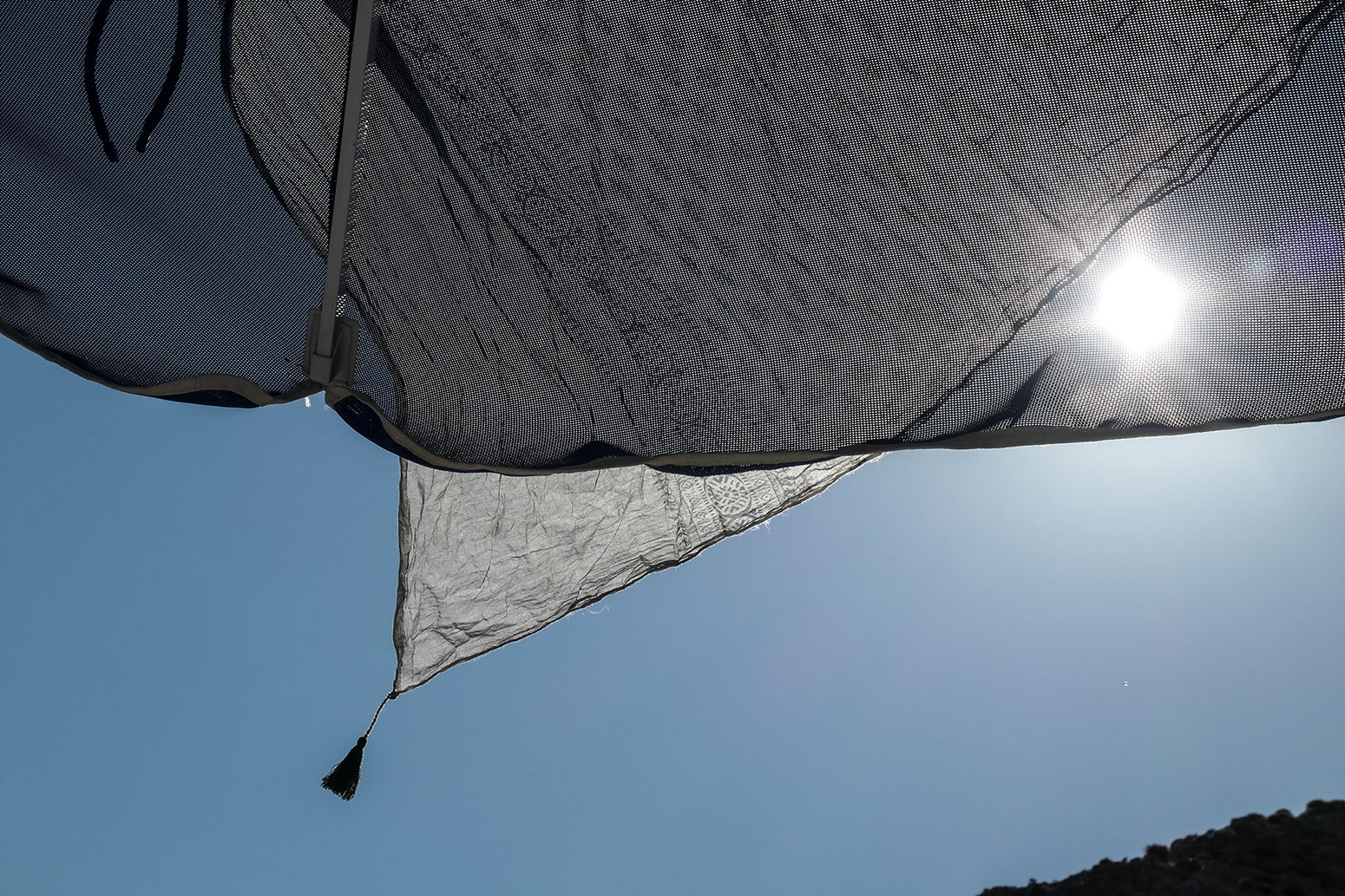
Leica C-Lux
or
from Chora Sfakion to Agios Pavlos
Introduction
During the last few months of last year I bought and shot with a number of different cameras (Olympus OMD EM1ii, Fujifilm X-T2, Nikon D500, Leica CL, Nikon D810 and Nikon D850 and finally the Panasonic Lumix G9 with the excellent Leica branded lenses). I wanted to get a real handle on the current status of the camera world.
I also wanted to get an idea of the advantages and disadvantages of using a camera with a smaller sensor, and especially to understand the real distinctions between µ43 and APSc. The outcome of this was that I felt that the advantages of µ43 in terms of lens size and handling outweighed the slight Image Quality advantages of APSc, but that my real photographic home was full frame cameras. As a result of this my personal kit settled to the Leica SL and M10 together with a Lumix G9 with two Panasonic / Leica zooms (the 12-60 Vario-Elmarit and the 100-400 Vario-Elmar).

The New Boat on the Block
ISO 125 1/1000th f5.6 24mm Leica C-Lux
I hadn't shot with a compact camera for something like 4 years, not since I tested the Leica D-Lux and V-Lux cameras, both excellent (and both still on the market). Personally, I always carry a bag, and there is always room for (at the very least), an M10 with a 50 lens, so neither of them found a permanent place in my bag.
I was interested when Leica offered to lend me the new C-Lux camera for a week or so, especially as it coincided with a short trip to Crete that we had arranged some time before. In fact, the "midnight-blue" C-lux arrived at home the day before our departure
The camera I have been shooting with is 'complete', but I didn't have the final firmware, so there may be some changes in image quality and operation when the camera is released.
As this camera is certainly intended to be a 'travel camera' I thought it might be fun to combine this article with some information about the Sfakia area, where all these pictures were taken.

Leaving Chora Sfakion
ISO 125 1/800th f5 36mm Leica C-Lux
On the south coast of Crete, between Hora Sfakion and Aghia Roumeli, the white mountains come right down to the sea, and there are no roads along the coast from Sfakia beyond Roumeli to Soughia. The land is given over to goats and vultures, with little villages and inlets which are only accessible by boat, or by foot along the E4 coastal path.
Emma and I have been walking here for about 20 years, but as this was a short trip we had to limit our travels to the coastal path between Sfakia and Aghios Pavlos.
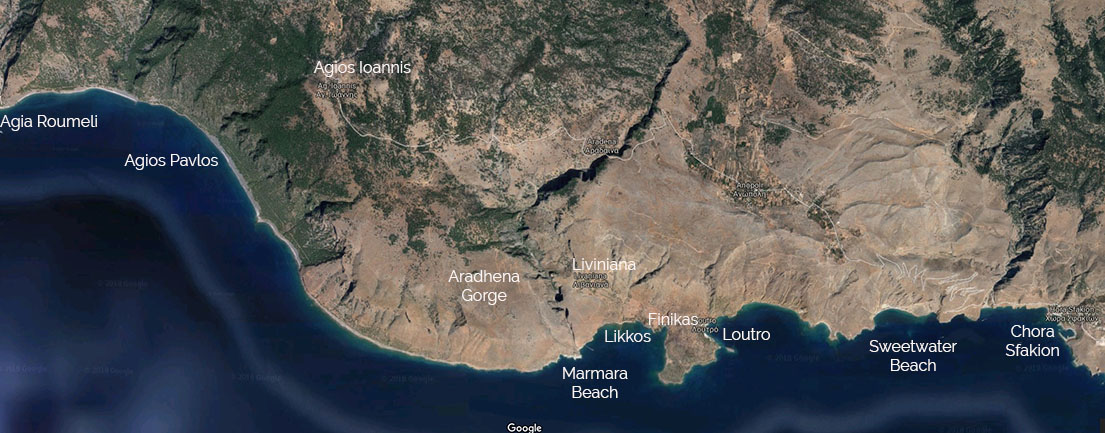
The Route
The Camera
Unless you have very small pockets (or very tight jeans) the camera is eminently pocketable, it comes in a rather tasteful 'midnight blue' colour with a silver lens, or in gold (which I haven't seen).
The C-Lux has a 1" 20mp back-side illuminated CMOS sensor, this is tried and tested, and is probably the same sensor as found in the Sony RS100 vi.
There is a remarkable 24-360mm Leica DC Vario-Elmar f3.3 to f6 lens. For a camera this size, and with a sensor this large, the C-Lux (and its sister camera the Panasonic TZ200) really have no competition. Even the just announced (and more expensive) Sony R100vi doesn't come close with it's 24-200 lens.
The Electronic viewfinder has 2.3 million dots, and a 0.53x magnification, this is quite usable, but it is quite small when compared with those on the SL (or the CL).
There is also a 3" fixed touch screen LCD allowing access to all the menus, to touch focusing and touch shooting, together with all the review features you would expect with a good touch screen.
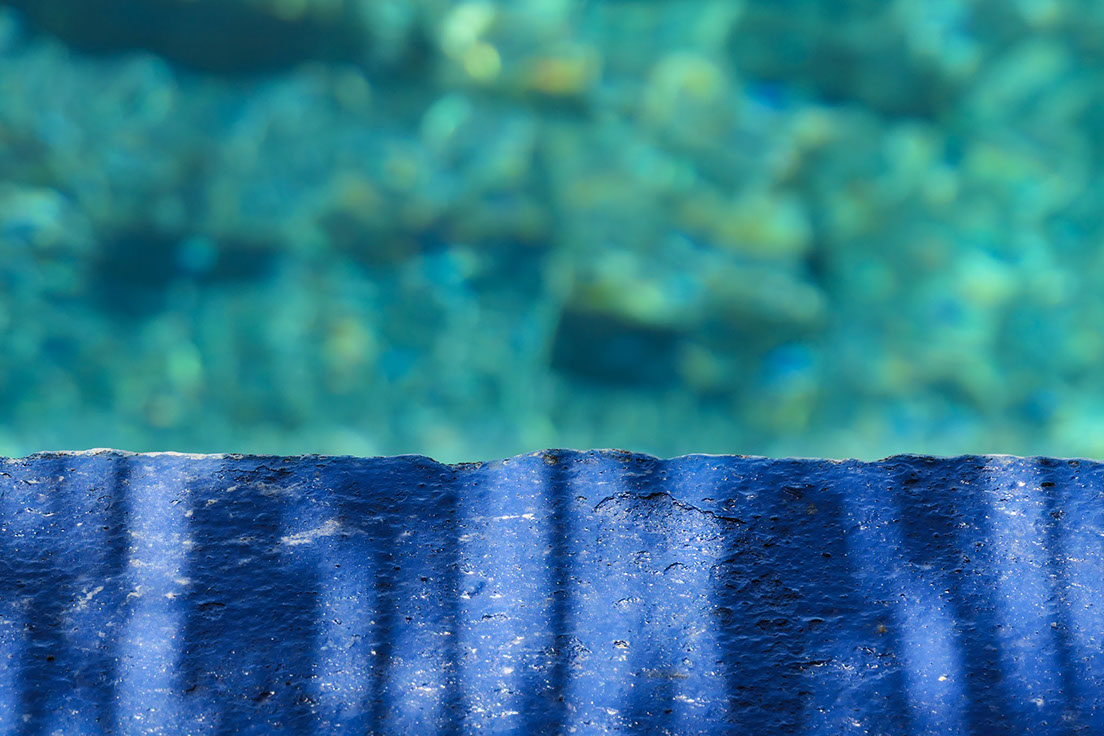
The Colour of Crete
ISO 125 1/320th f6 176mm Leica C-Lux
I have only had the camera for 1 week, and I've not had the facilities or desire to do formal testing, I was trying to establish whether it functioned sufficiently well to be a good travelling companion. However, there are many reviews of the C-Lux's sister camera the Panasonic Lumix DC-ZS200/TZ200 available on the internet, and these are pretty much universally favourable.
I'm not aware of the worldwide pricing for the camera, but my impression from the European price (€970) is that this time around the premium to pay for the red dot and the nicer styling is modest. If you factor in the increased resale value , then It really begins to look like a bargain!
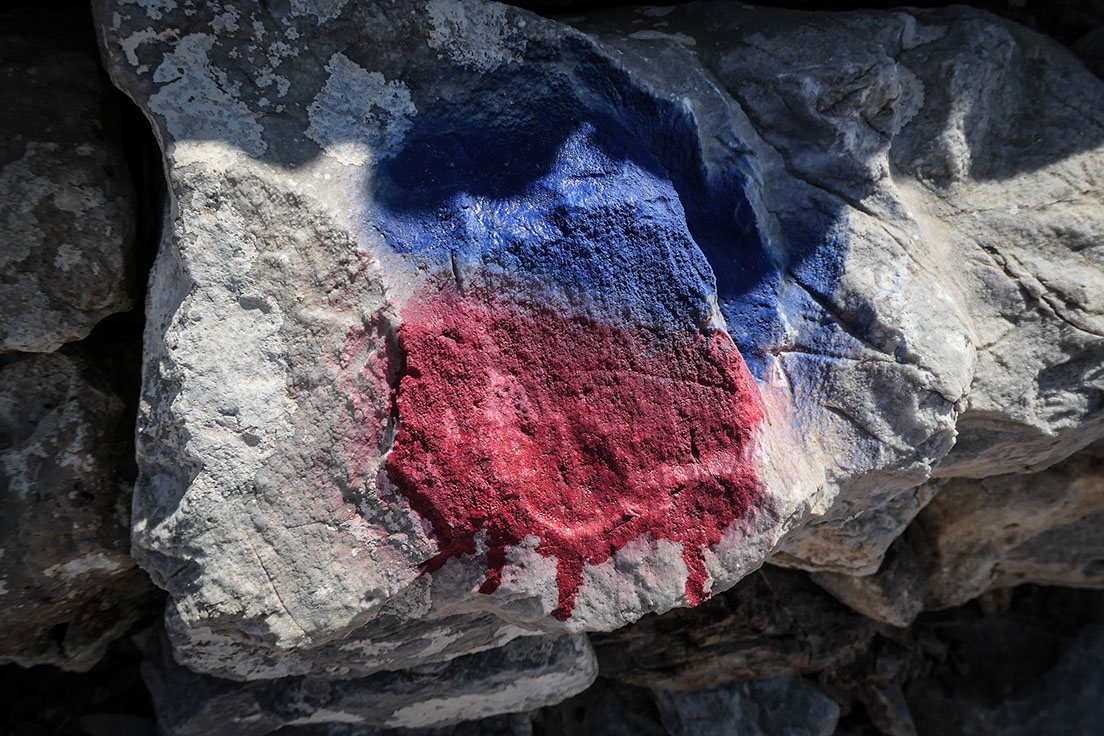
The Colour of the Coastal Path (E4)
ISO 125 1/1000th f4.5 24mm Leica C-Lux
Hora Sfakion
Is situated almost due south of Chania on the south coast of Crete. It is a small coastal town close to the end of the Imbros Gorge. The British army was evacuated from here during World War 2.
These days the road from the north coast is in pretty good shape, but when Emma and I first arrived around 20 years ago It was difficult to negotiate and often blocked with rock falls (and herds of goats). After turning off the main road at Vryses, it's a splendid drive through the White Mountains to the plain at Imbros and then the long winding road down to Sfakia after your first glimpse of the island of Gavdos and the Libyan see sparkling nearly 1000 metres below.
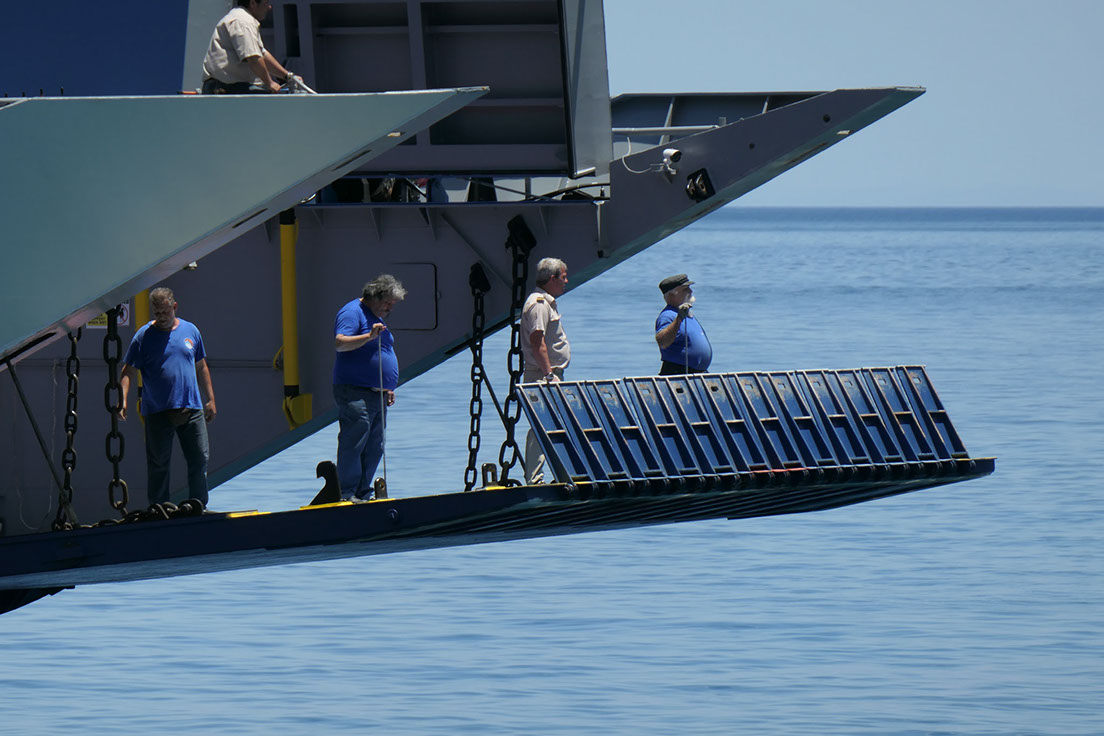
The Landing Deputation
ISO 125 1/640th f6 326mm Leica C-Lux
In addition to being wonderfully hospitable, the Sfakian people, having been assaulted from all directions over the last few hundred years are fiercely independent and very much a law unto themselves.
From Hora Sfakion boats run west along the coast as far as Paleochora, and south to Gavdos. Every day the Daskiologiannis sails back from Roumeli at 5.30pm with the walkers from the Samaria gorge. A seemingly endless stream of people leaves the boat at Sfakia and head up to their coaches, which waiting to drive them back to the resorts on the north coast.
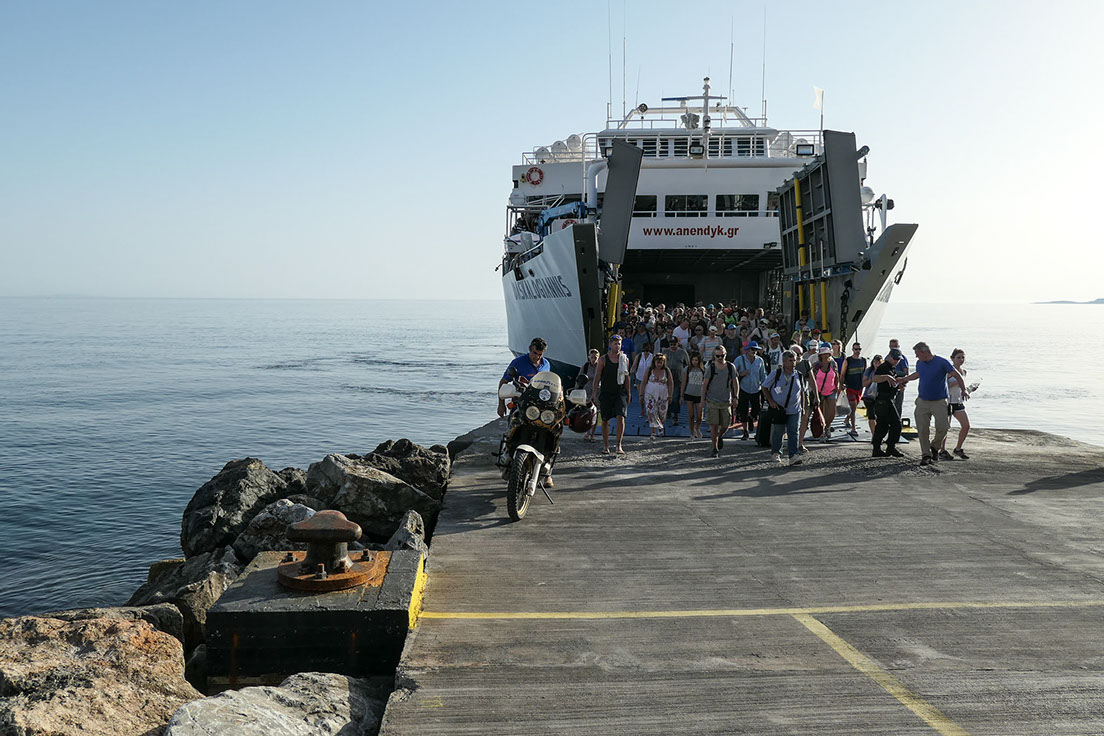
The Walkers from the Samarian Gorge arrive in Chora Sfakion
ISO 125 1/1000th f4.5 24mm Leica C-Lux
The Travel Camera
Not having touched a compact camera for a few years I was a little worried about using it as my only camera, so I bought along my M10 and the Lumix G9 as companions (traveling without hold luggage meant leaving the SL at home).
In the event I did shoot with the C-lux alone, I sometimes carried another camera in my pack, but didn't actually use it much. The C-Lux is not weather sealed, and it had a lot to put up with; we walked something like 80km in the short time we were there, usually in temperatures up in the mid 30s centigrade. I carried the camera in my hand all the time without a case, so it had to contend with sweat and dust much of the time. It looks unmarked, which is a tribute to the finish of the metal top and bottom plates and the quality of the 'leather' finish on the rest of the body.
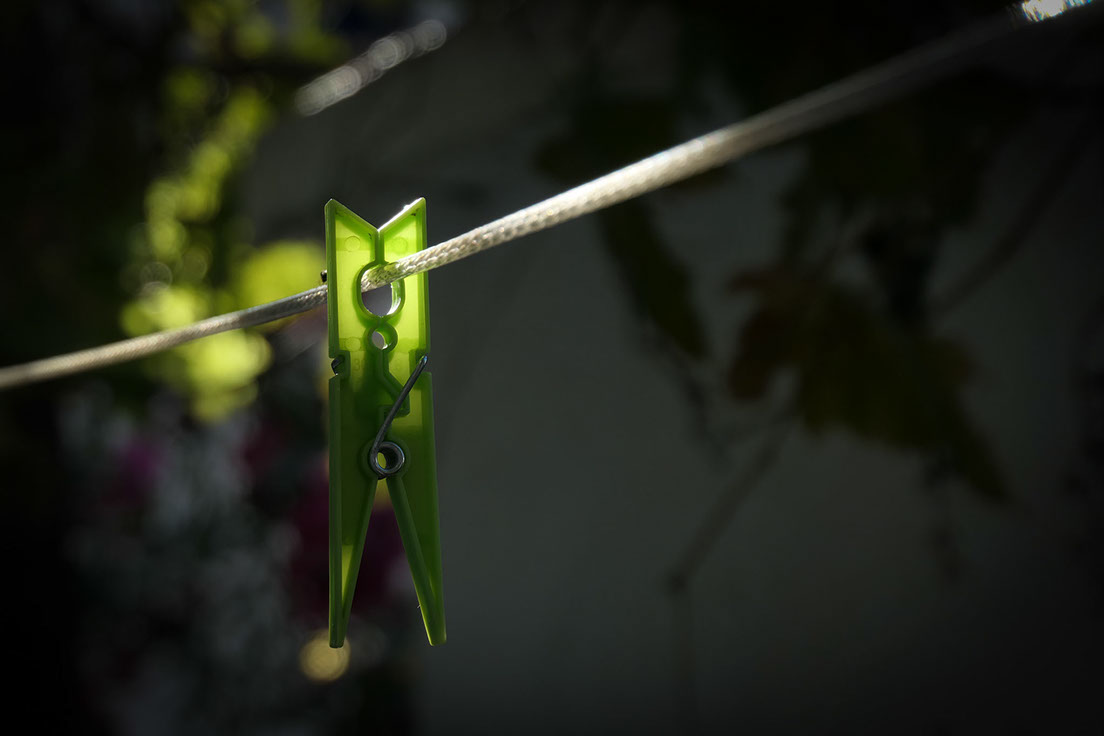
Something about Clothes Pegs
ISO 125 1/320th f5.6 133mm Leica C-Lux
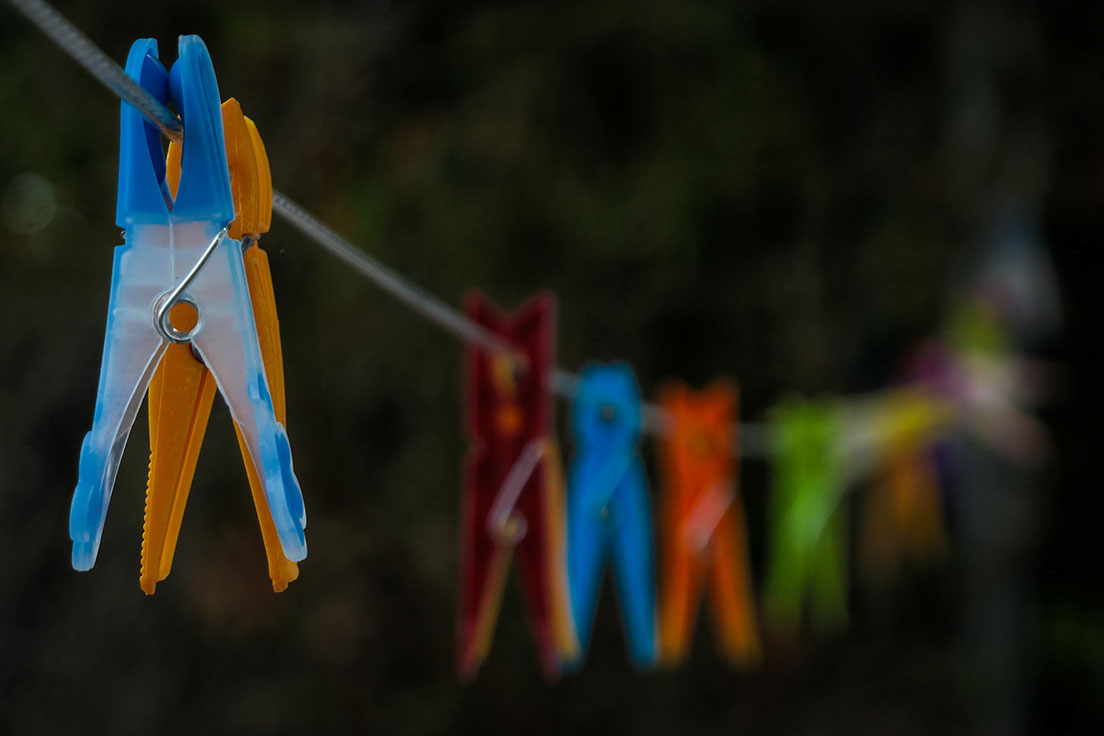
Something else about Clothes Pegs
ISO 400 1/125th f6.2 227mm Leica C-Lux
Glykanera (Sweetwater Beach) and the path to Loutro.
The road heads west along the coast from Sfakia for a couple of miles and then snakes up the hill inland to the town of Anopoli (about 600m above sea level). At the first bend there is a small path leading along the coast, this is the E4 coastal path, often there is a sign, but the Sfakians like to use signs for target practice so it can't be guaranteed!
A rather precipitous path takes you down the cliff to sea level, and then you can walk along the bottom of the 600m high cliff until you reach Sweetwater beach. This was a hippy beach back in the 70s, and still has a few campers, although these days they are more likely to be hikers on their way along the coastal path.
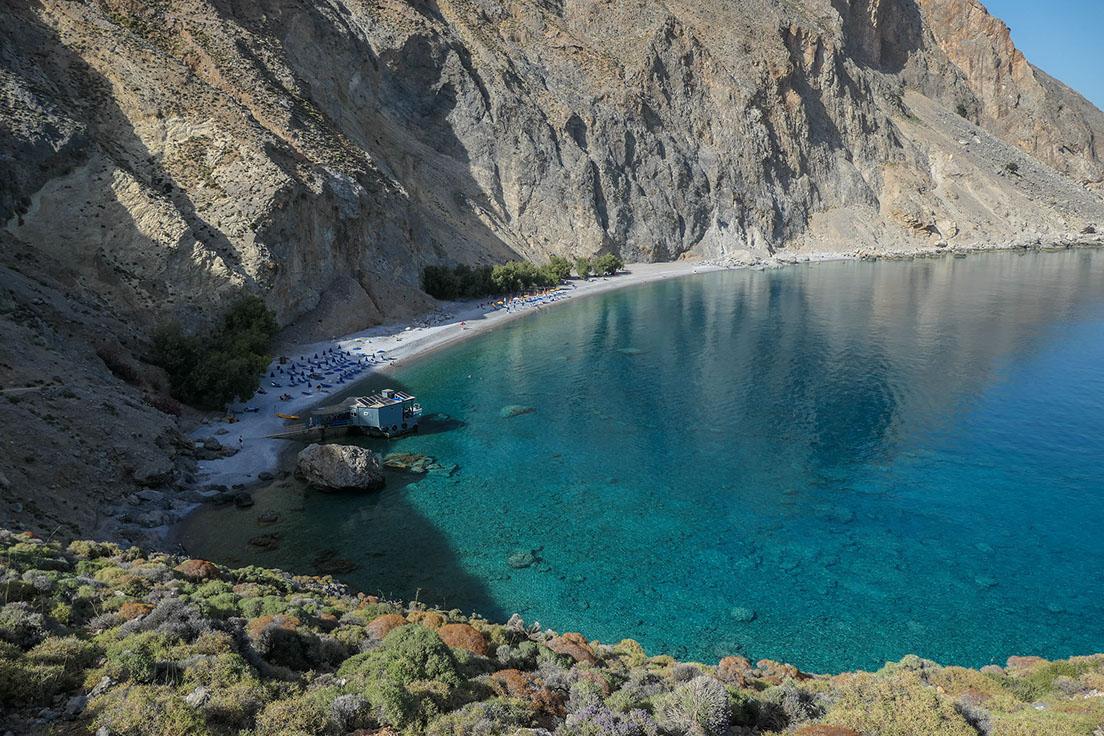
Glykanera - Sweetwater Beach
ISO 125 1/800th f4.5 24mm Leica C-Lux
The beach derives its name from the water which wells up between the pebbles. The water is very cold and is clean enough to drink, and there is enough of it to make the sea water noticeably colder than on other beaches along the coast. At the western end there is a large cistern where water is collected and piped along to the villages to the west. For several of the villages it is their only supply of water.
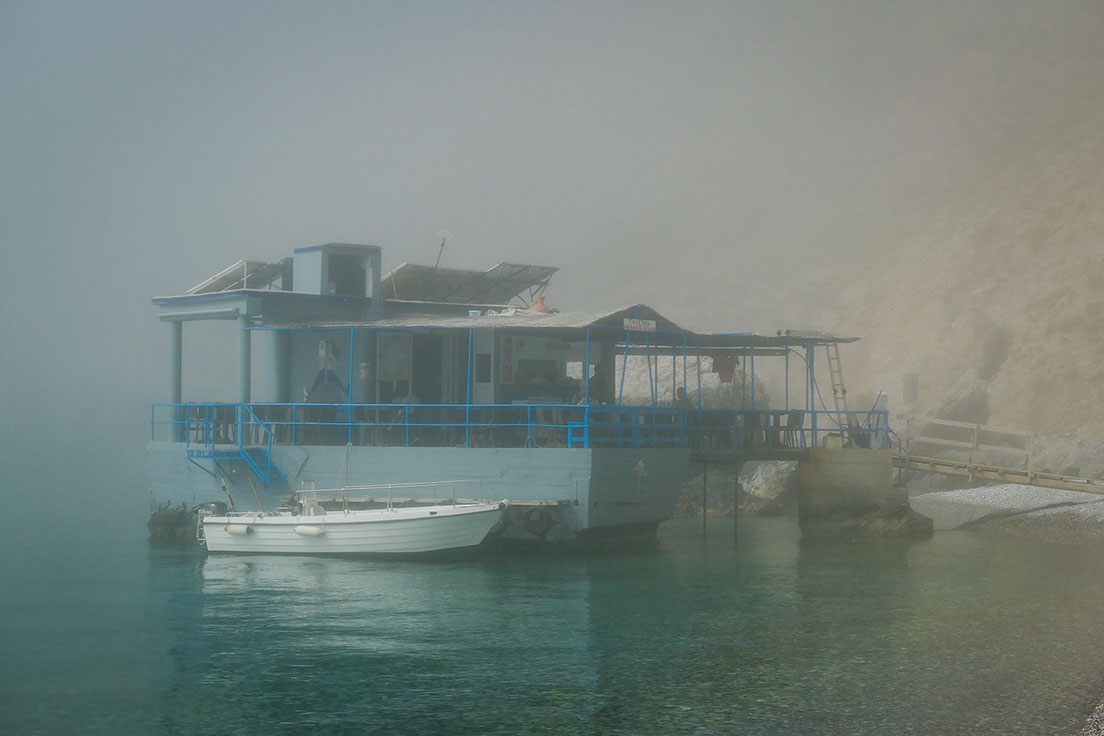
Sweetwater Beach - the Mermaid Taverna in the mist
ISO 125 1/1000th f7.1 67mm Leica C-Lux
The beach itself is about 500m long. Dress is optional at the eastern end but more formal around the Mermaid Taverna which has been built on a rock in the sea with a wooden bridge to reach it from the beach. Years ago, this was little more than a snack bar at the back of the beach, but Giorgos and his crew have developed it over the years and you can now get a great meal at a sensible price.
Sweetwater beach has been in lists of the best beaches in the world on a number of occasions, but still it is not too crowded and has a great atmosphere.

The Route from Sweetwater to Loutro
ISO 125 1/400th f5.3 101mm Leica C-Lux
If you carry on along the E4 West for another 45 minutes or so you reach Loutro. The path is easy enough (with a few drops and climbs), but, south facing as it is, it can be very hot in the middle of the day and there only a couple of trees for shade. For the faint hearted there are boats from Sfakia and Loutro several times a day.
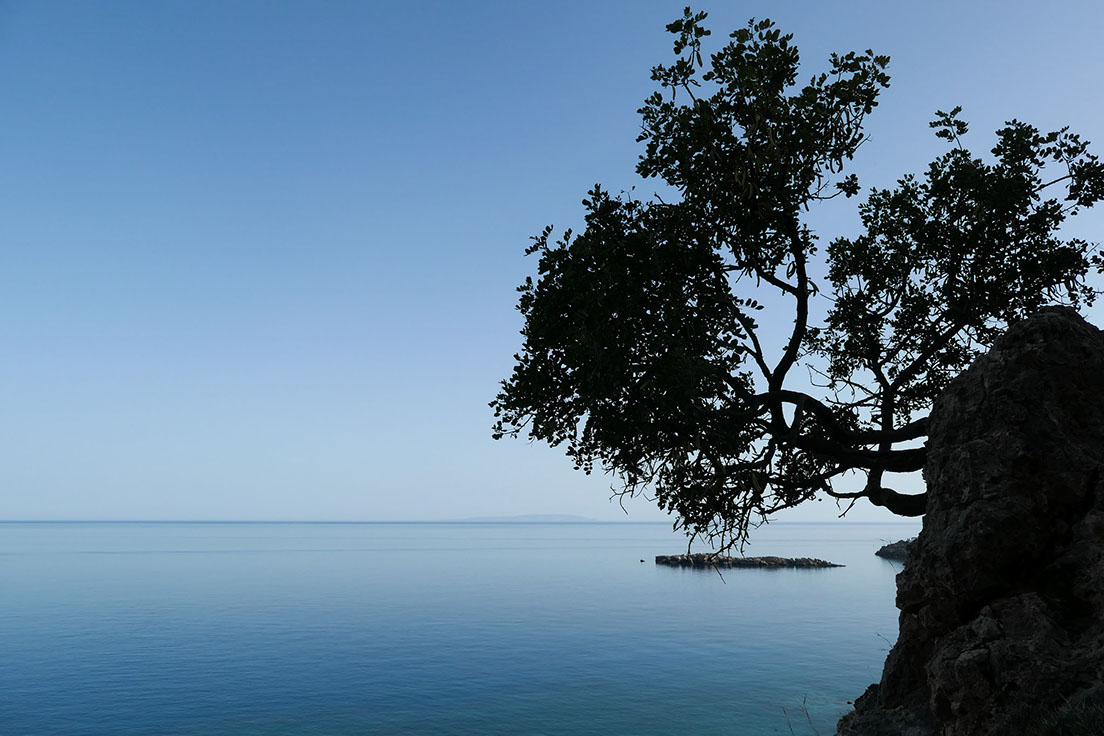
Goat Island outside Loutro - and that tree!
ISO 125 1/1000th f5.6 24mm Leica C-Lux
Loutro
Loutro is a picturesque fishing village snuggled under the cliff in a bay sheltered from the westerly winds. It was almost abandoned by the 1960s, but since then it has been developed gradually and nowadays Is filled with hotels and restaurants. There is a little beach packed with sun-beds and umbrellas and a couple of shops selling essentials and tourist goods. To my mind it isn't really a place to spend the daytime, but it makes a great base for walks along the coast and into the mountains, and in addition to some really good tavernas there are a couple of bars which stay open late into the evening.
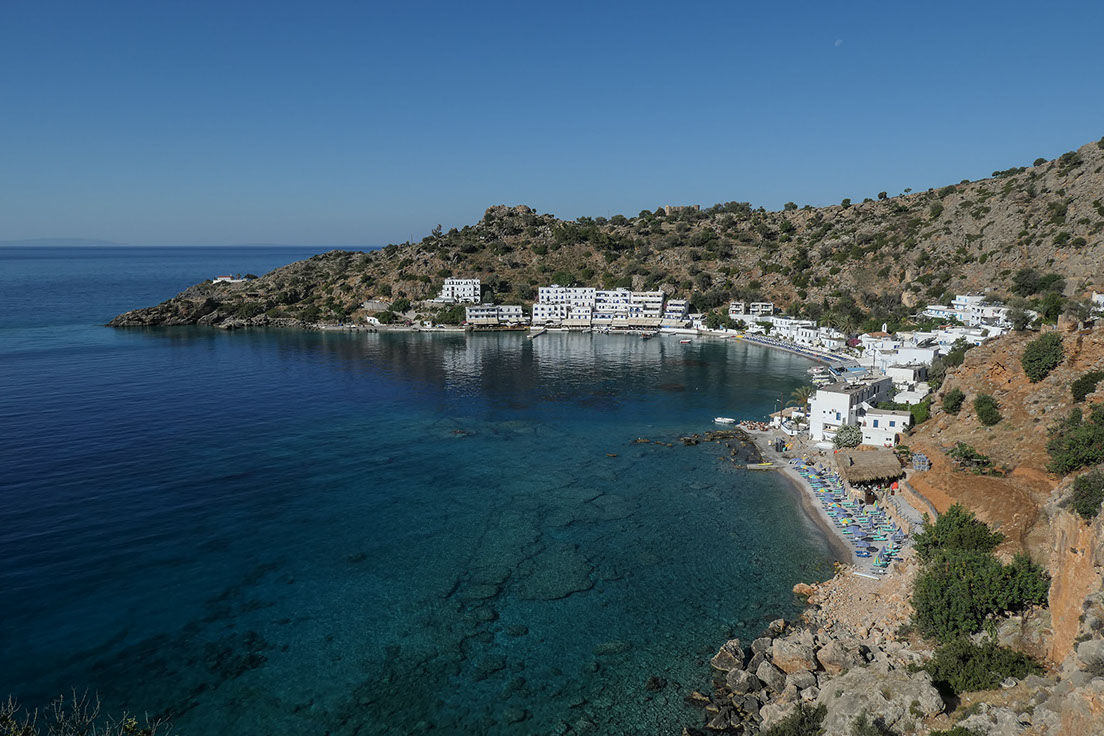
Loutro from above
ISO 125 1/800th f7.1 24mm Leica C-Lux
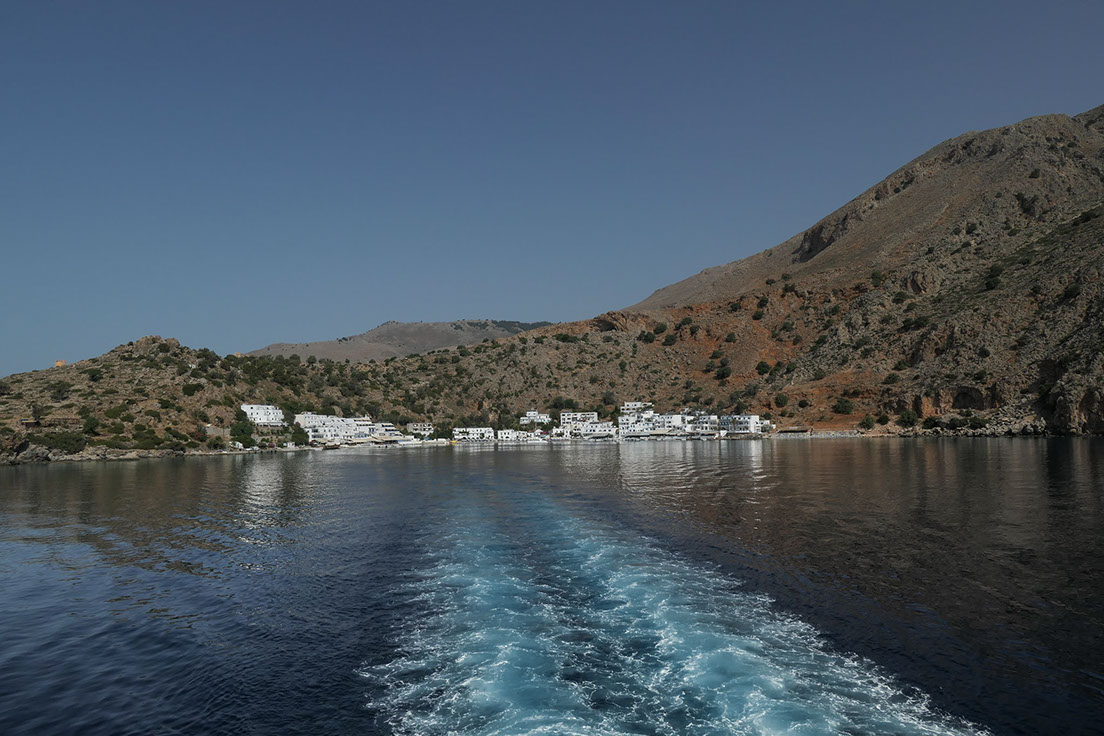
Loutro from the sea
ISO 125 1/1000th f8 24mm Leica C-Lux
Das Wesentliche?
Not really! The C-Lux has every conceivable function hidden away in its menus and buttons. Both the Essential, and the not so essential.
I didn't have the manual, so on the flight to Crete I used the manual for the Panasonic G9 to familiarise myself with the camera, the menu system and options are pretty much the same, including the autofocus options and controls. To be fair, Panasonic have done a really good job steering a path through the minefield of modern camera design, they've managed to avoid the impossible menu confusion of some manufacturers, and to keep the controls and options sensible and easy to use.
For my purposes I wanted to set the camera up so that I could concentrate on making images rather than on fiddling with controls and menus. To that end I made a number of changes to the default setup of the camera.
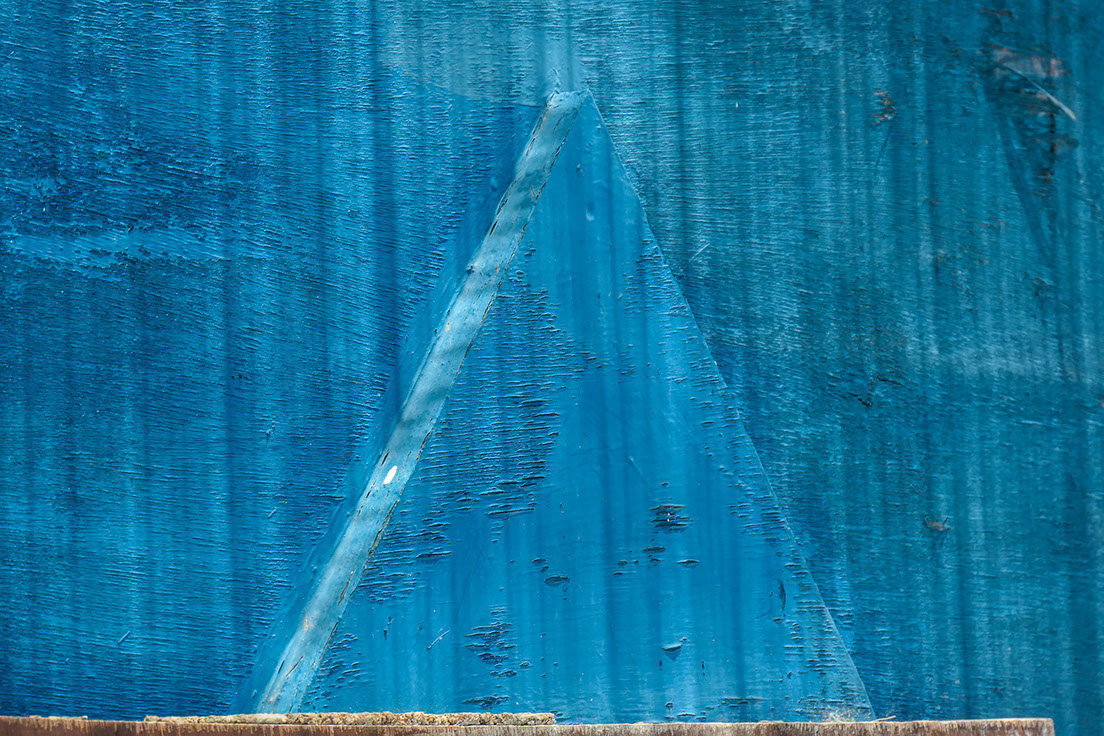
Blue Pyramid
ISO 125 1/320th f5.8 153mm Leica C-Lux
I shot in Program mode, because the sensor is relatively small, and the lens relatively slow, I thought that limited depth of field wasn't really an option, so I'd let the camera work out the ideal aperture. As far as shutter speed was concerned, I wasn't sure how good the image stabilisation would be, so, again, it made sense to let the camera decide on the best shutter speed. For the same reason I set the camera onto Auto ISO
I changed the ring around the lens to 'zoom', although, to be fair, I found myself mostly using the standard ring around the shutter release, it's reasonably quick and worked well.
I set the rear dial to exposure compensation (just like my M10), changes are shown in the image on the screen / EVF, I always like to work this way.
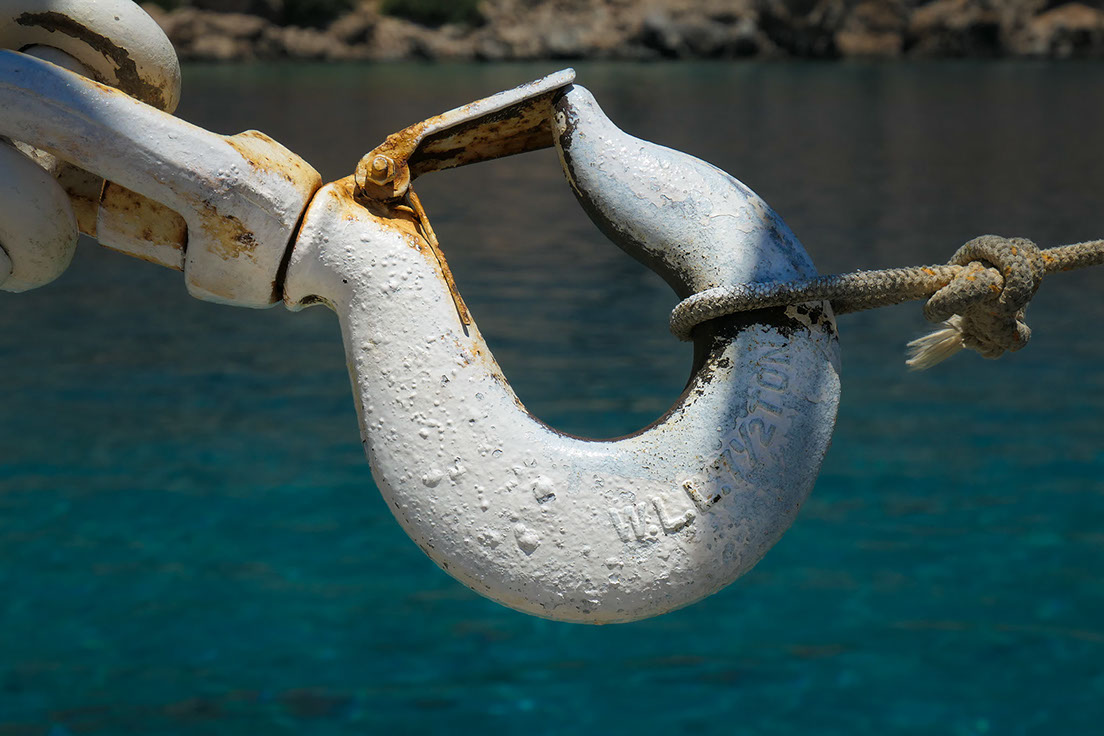
Hooked
ISO 125 1/800th f8 104mm Leica C-Lux
For Autofocus I did do a little experimentation. I had it set to AFS (auto-focus single). I did try their new 'Intelligent' AFF mode, but it removes the option of fine tuning focus with the dial around the lens with the shutter half pressed.
In the end I mostly used 'face detect'; this moves to multi-area if it can't find a face to fix on. Used together with the touch-focus option this worked really well. In addition, I had the touch focus so that it prioritised the focus point for exposure control. The touch focus is really good and works even with your eye to the EVF when the screen is blank. You can elect to have it work literally - so that where you touch the screen relatively is whereabouts on the image the focus point will go; or else 'offset' where it moves around with your finger relative to the original point of focus.
The camera has a multitude of 'scene' modes in addition to 4k video. I didn't use any of these!
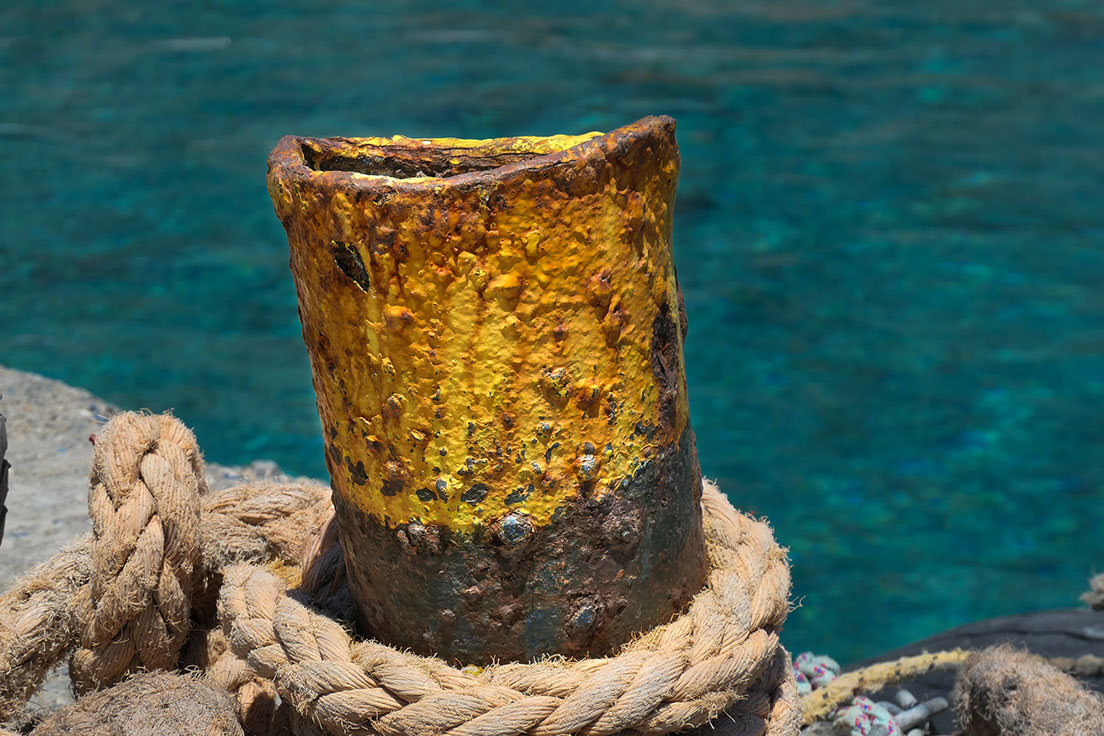
Stumped
ISO 125 1/640th f5.2 99mm Leica C-Lux
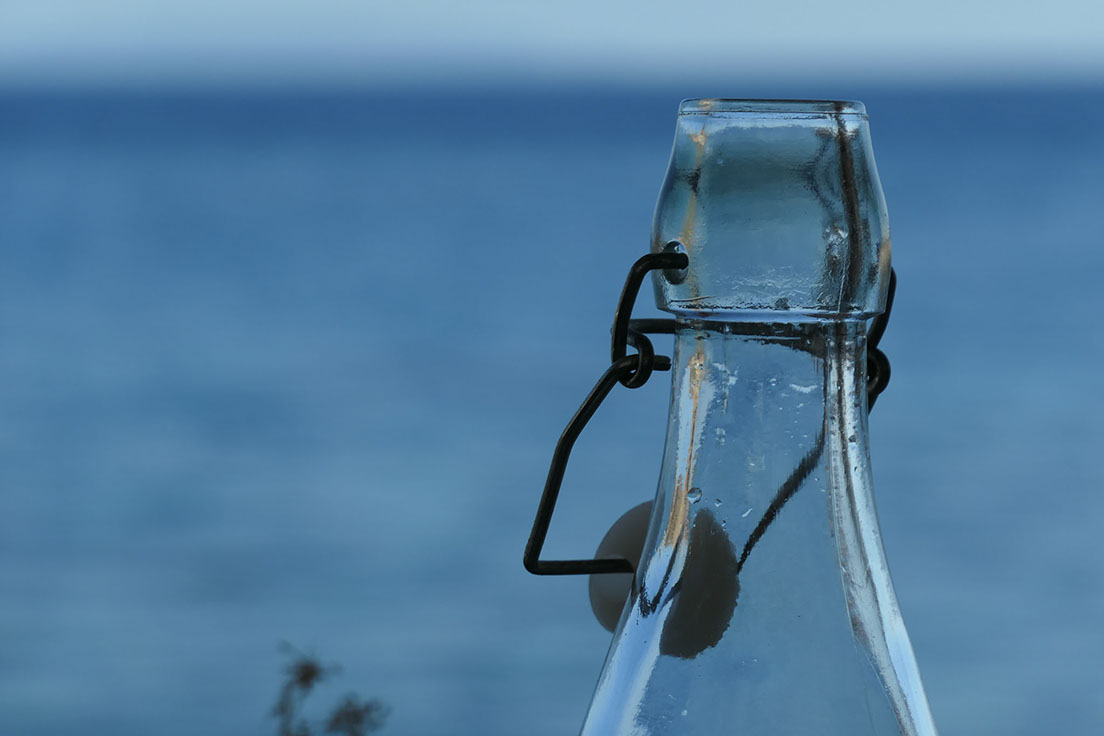
Bottled
ISO 125 1/640th f6 185mm Leica C-Lux
Likkos (the Small Paradise)
Between two tavernas In Loutro there are some steep steps which take you up to meet the E4 path (which goes around the back of the village), a stiff climb takes you up on to the headland between Loutro and Finikas. There is a ruined Venetian castle which is well worth a visit.
These days Finikas (or Finnix or Phoenix) is a little inlet with a small hotel, some rooms and a good taverna. Back in Biblical times it was the largest port in Southern Crete, there is a story that St Paul landed there and tried to convert the locals, but that they beat him up and sent him on his way. One commentator doubts that this was true but says that if St Paul had landed and tried to convert the locals, then they almost certainly would have beaten him up! If you go snorkeling you can see fish swimming between the ruins of the old port
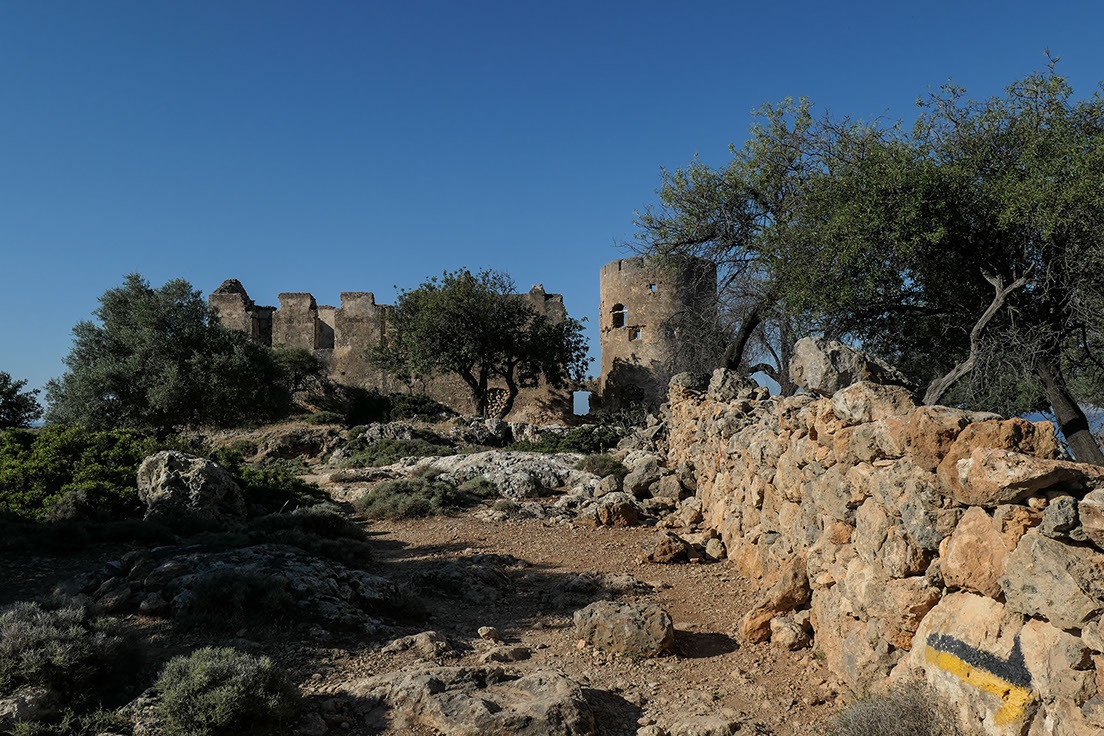
The Castle in the morning light
ISO 125 1/1000th f6.3 28mm Leica C-Lux
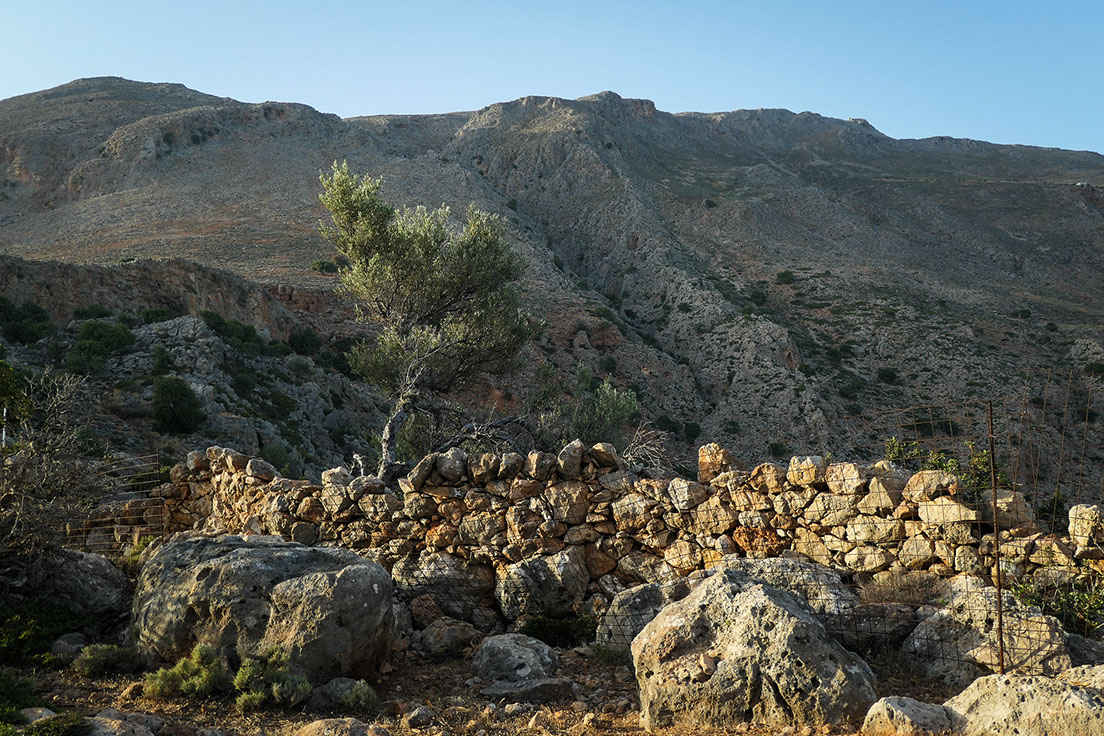
Between Loutro and Finnix
ISO 125 1/400th f3.5 29mm Leica C-Lux
Over the next headland Is Likkos - there are three tavernas with rooms in the wide bay. A Small Paradise is the first, with rooms set around Niko's Restaurant. Wonderful Traditional Cretan food together with freshly caught fish and a warm welcome from Aidin Nickoloudakis, her husband and brothers make it a fine place to stay. It was our base on this trip, and whilst we were out and about every day many people just chill on the beach in front of the hotel for their whole holiday.
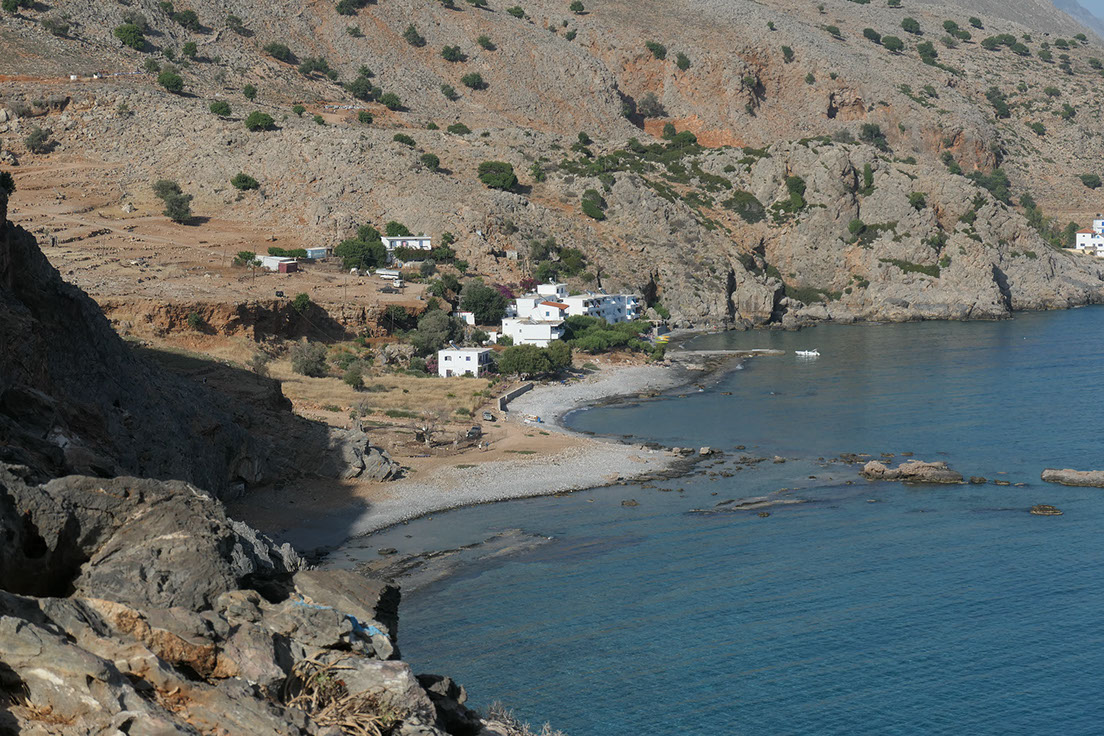
Likkos from the headland on the way to Marmar
ISO 125 1/1000th f5.6 85mm Leica C-Lux
The hotel is based around a working farm run by the family, goats and sheep are everywhere, and often provide the meat for supper for many of the restaurants In Loutro (as well as Niko's restaurant).
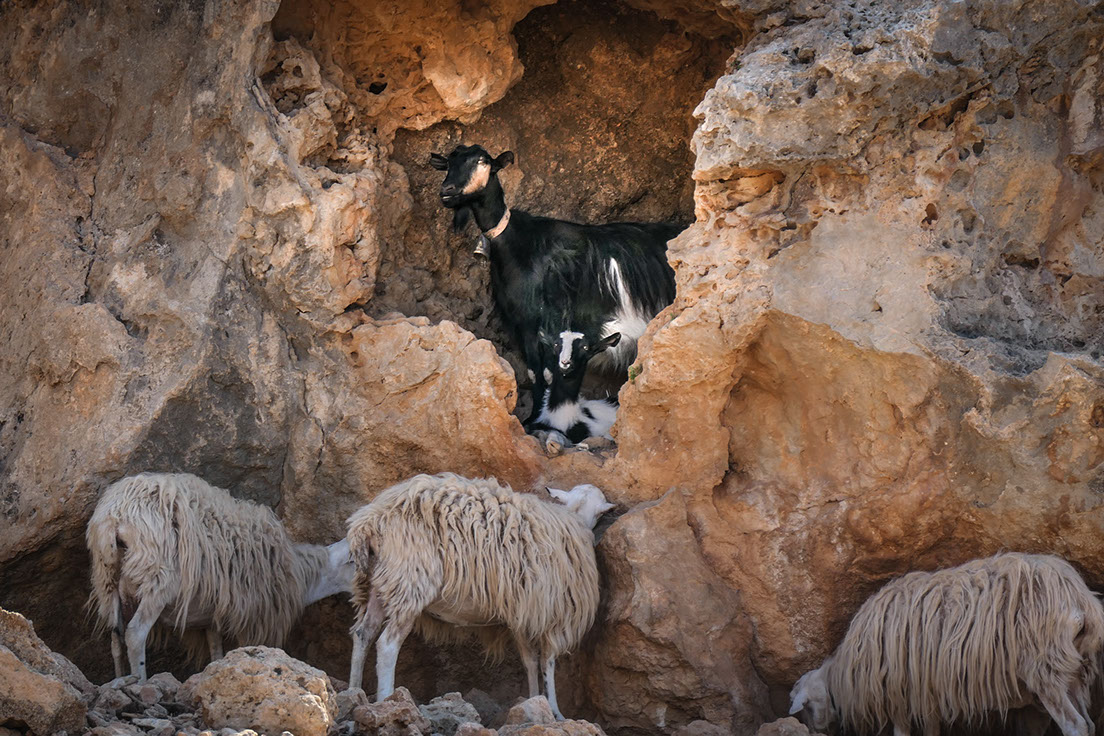
Refuge in the Rocks (sheep not allowed)
ISO 125 1/125th f6.3 263mm Leica C-Lux
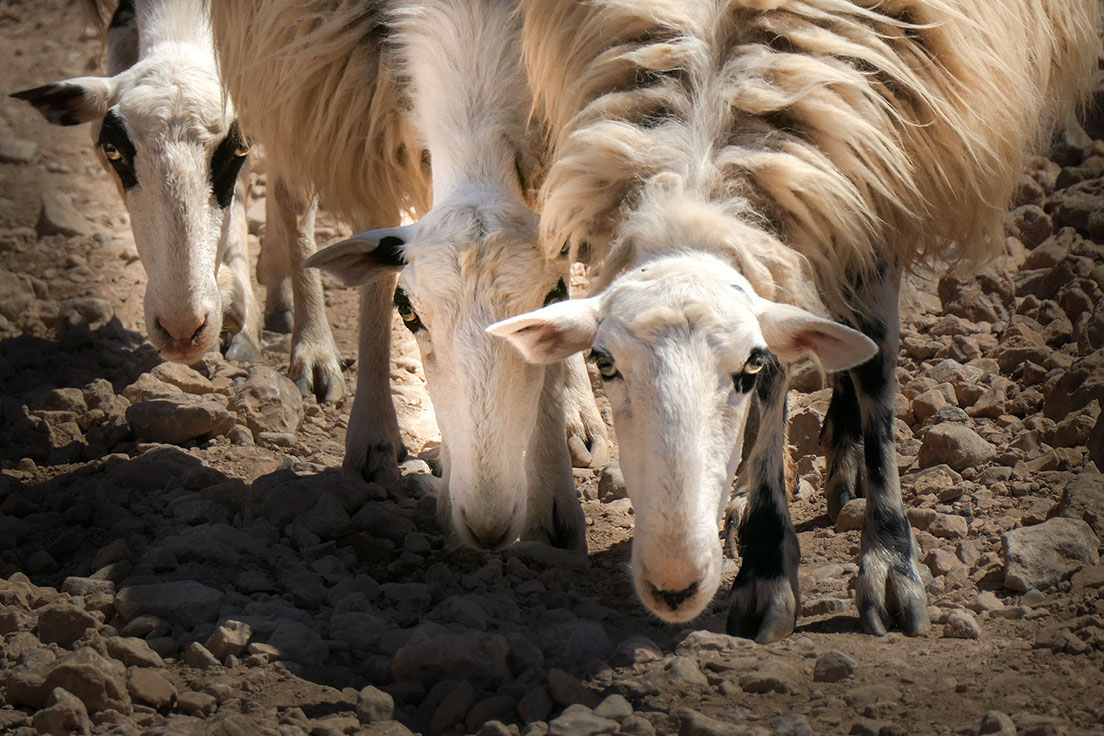
The Deputation
ISO 125 1/1000th f6.4 359mm Leica C-Lux
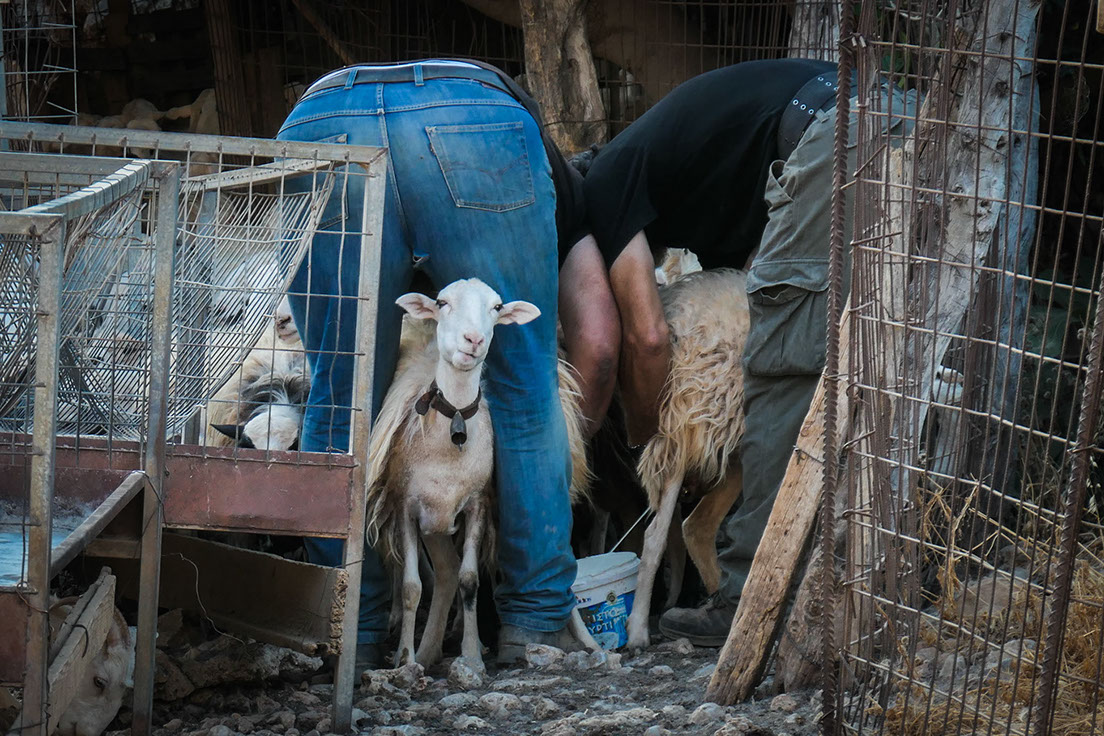
The Morning Milk (they can milk 100 sheep in around 30 minutes and get 50kg Milk
ISO 250 1/100th f5.7 143mm Leica C-Lux
Handling and Operation (and firmware update)
Having set up the C-Lux the way it seemed best I started to take pictures. The camera easily fits in a pocket, but it's so small it's really not a bother to carry it in your hand all the time, which is what I did. It only went into a pocket when negotiating a tricky piece of path.
Startup time is okay for a camera of this class, but hardly instant, so most of the time I left the camera turned on so that it was ready to go. The buttons especially are rather small, so it was good to have organised the controls so that the only thing needed was the rear dial and the dial around the lens.
I'm a viewfinder kind of photographer and I was expecting to use the EVF most of the time, however, compared to the SL it is rather small (0.53x magnification) and I found myself increasingly using the rear screen. Most of the time I was shooting in very strong sunlight, and of course this made it harder to see either the screen or the EVF, but in practice I found them good enough to compose the image easily and shooting with the rear screen the scene is laid out before you so that is all that's needed.
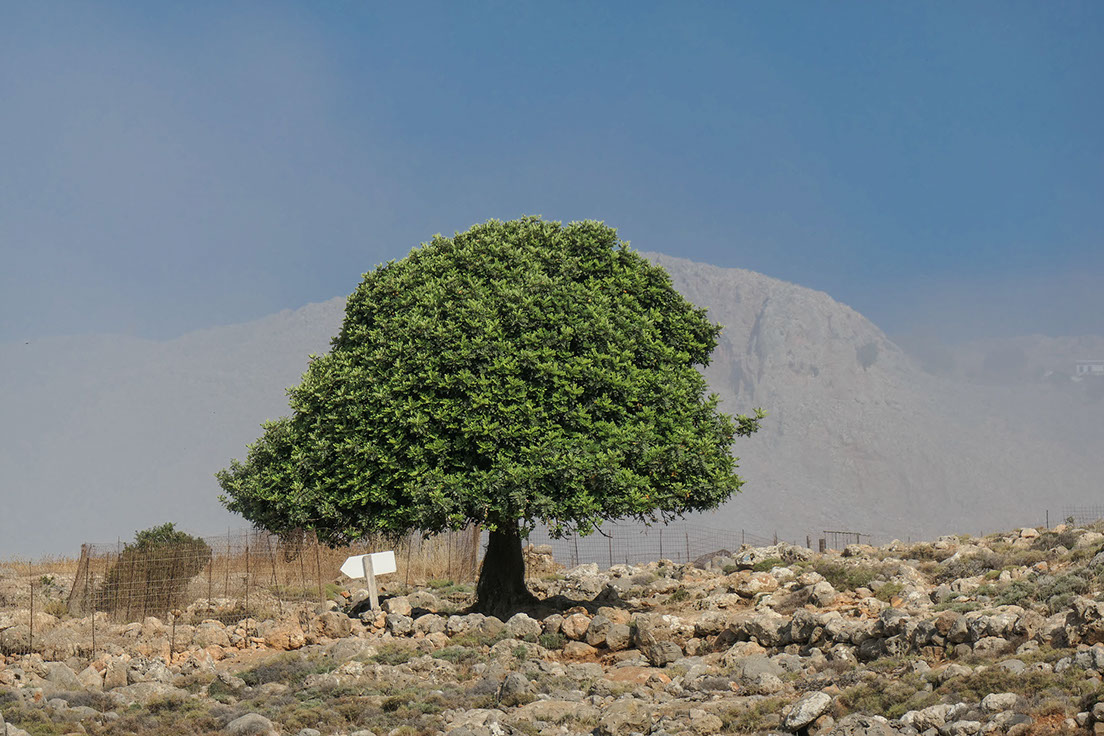
Looking Toward Livaniana
ISO 125 1/1000th f5.9 172mm Leica C-Lux
The Autofocus performance seemed to be extremely good - some scenes confused it a little, as did very low light, but on the whole, it felt instant and proved to be very accurate. Face detection was excellent, and when no face was available it quickly moved to multi-point focusing. The only thing I found slightly confusing is that if you had chosen a point with the touch focus it stayed on that point rather than reverting to face detect (almost certainly the correct way of working but slightly irritating nevertheless).
The macro mode varies minimum distance to the subject depending on the focal length chosen; from 3cm at 24mm to 1m at 180 (and then onwards to 360), this is pretty standard for a camera of this type, perhaps it wouldn't be one's first choice for shooting macro, but it does a good job for close-ups of flowers and bugs. AF is a little slower in macro-mode.
Shooting with the camera was fast and fun, and it was easy to take pictures one handed. Fast enough indeed that I think it would be quite a good camera for street photography (especially for those who don't like to limit their depth of field).
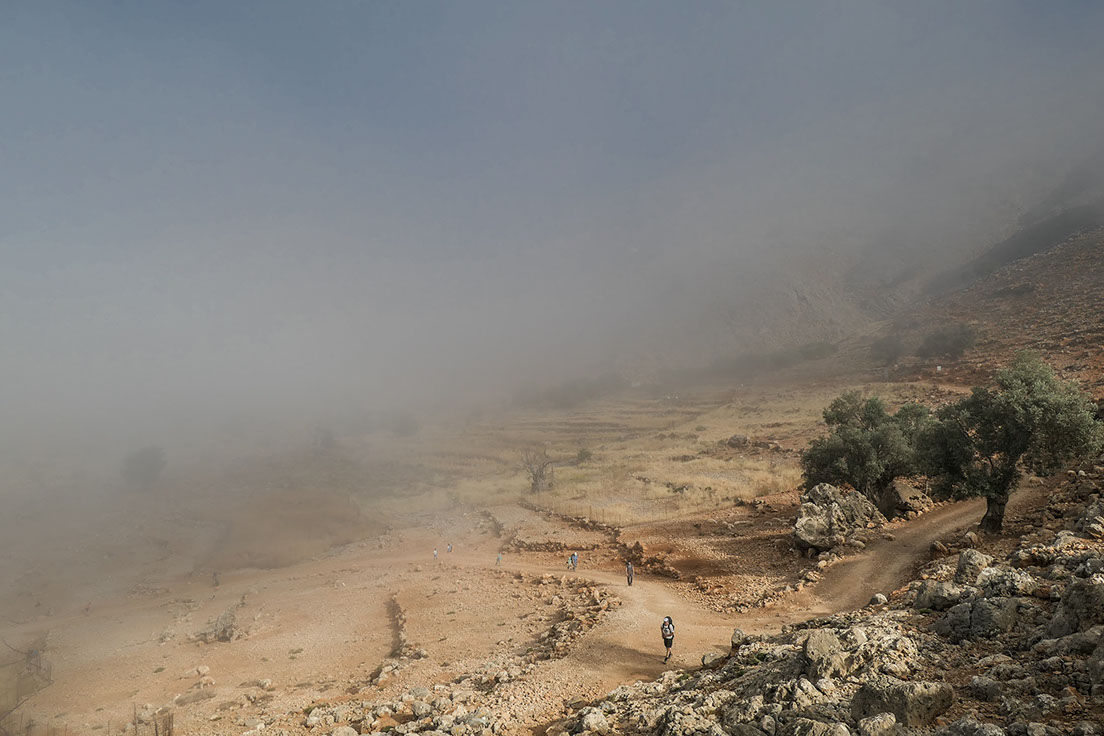
Emerging from the morning mist
ISO 125 1/1000th f5.6 24mm Leica C-Lux
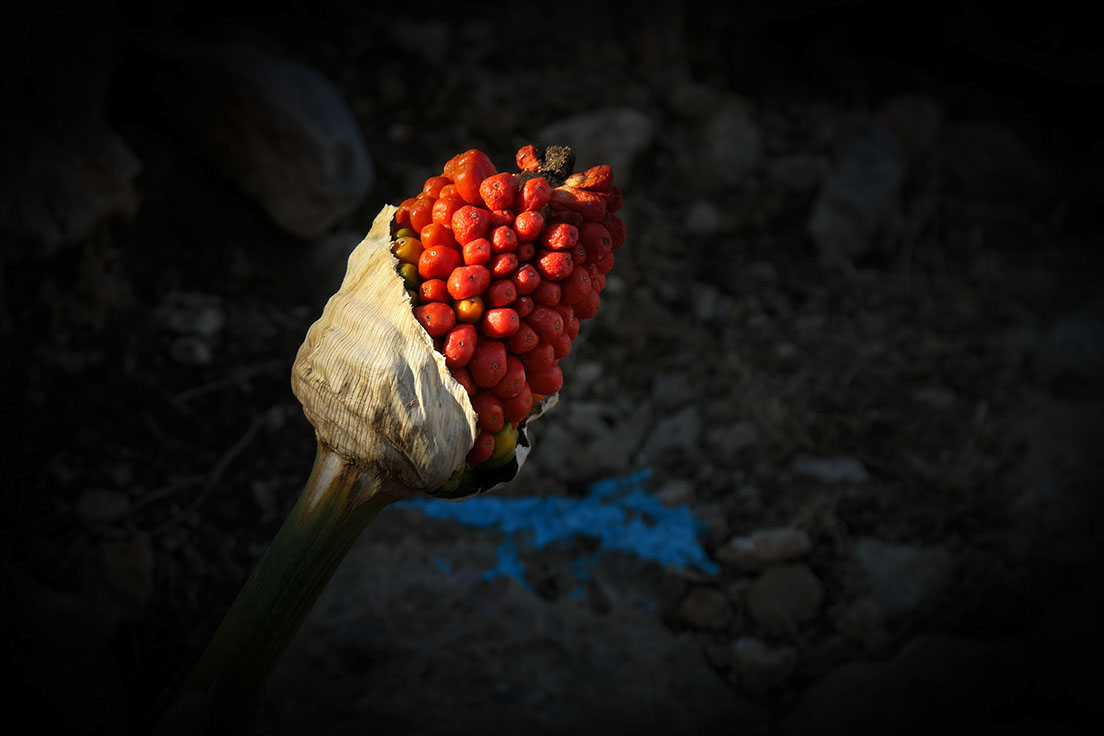
Dragon Lily
ISO 125 1/320th f5.5 122mm Leica C-Lux
Livaniana and the Aradhena Gorge
Livaniana is perched high up above Likkos on a ridge between it and the Aradhena Gorge. It used to have a school and church, but apart from a couple of houses rented by hardy tourists it is largely deserted these days. Walking up from Likkos is either on a winding track or on the ancient donkey route, it's not difficult, but it is steep and can be very hot near the middle of the day as there is little or no shelter.
Arriving at the village the first thing you notice are the ancient olive trees clinging to the steep slopes, some of these are well over a thousand years old and twisted into wonderful shapes, goats shelter from the afternoon sun amongst the roots. There is a little bar where you can get an iced cold orange juice (or better still a beer), sometimes the proprietor, Ike is there, at other times there is a fridge and an honesty box.
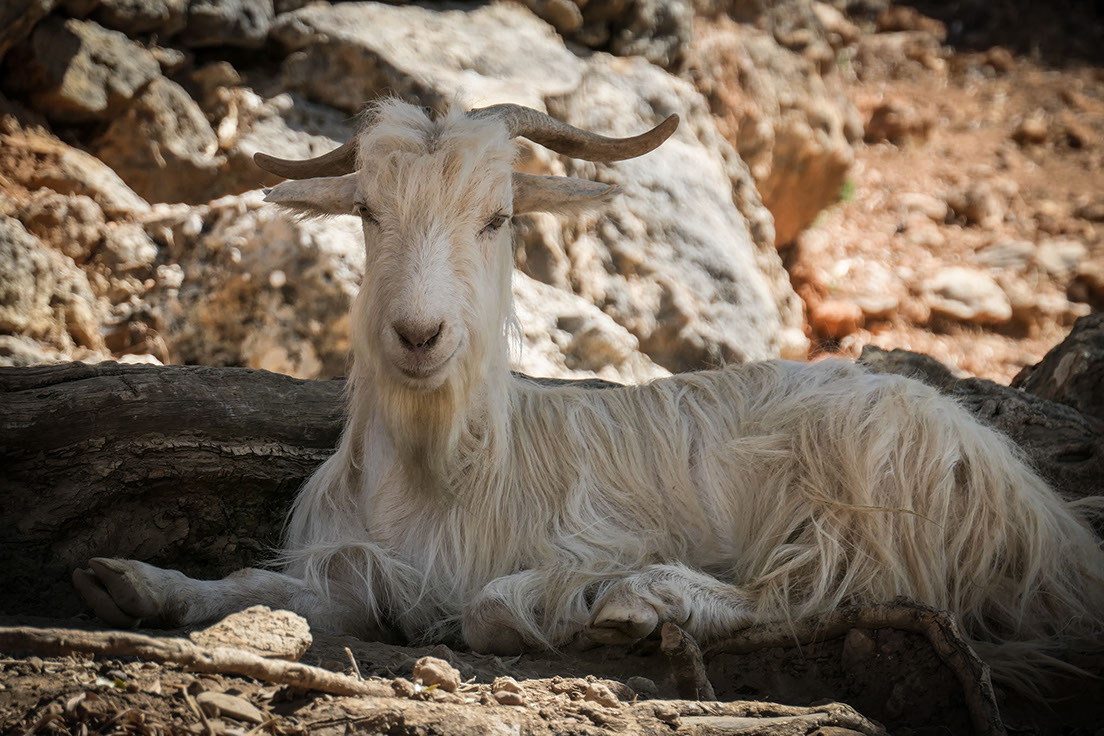
Snoozing amongst the Olive Tree Roots
ISO 125 1/320th f6.3 224mm Leica C-Lux
Climbing to the top of the village the path divides and you can choose to climb further and meet the road from Anopolis or turn left and down into the gorge. Our favorite is the middle route which takes you up higher through very old terraces to the 'mushroom rock' and further again to a little chapel. Beyond that you can plunge down into the Aradhena Gorge.
There are many gorges cutting into the White Mountains, the Samaria being the most famous. The Aradhena gorge is quite different - some of it is quite difficult (although the rope has been replaced by a rather scary skyway cut into the cliff!). The steep sides and soaring vultures make it an impressive and slightly sinister walk, and you might easily come across a dead goat which made a mistake leaping from rock to rock! Whilst we were there the oleander bushes were all in flower making a wonderful display
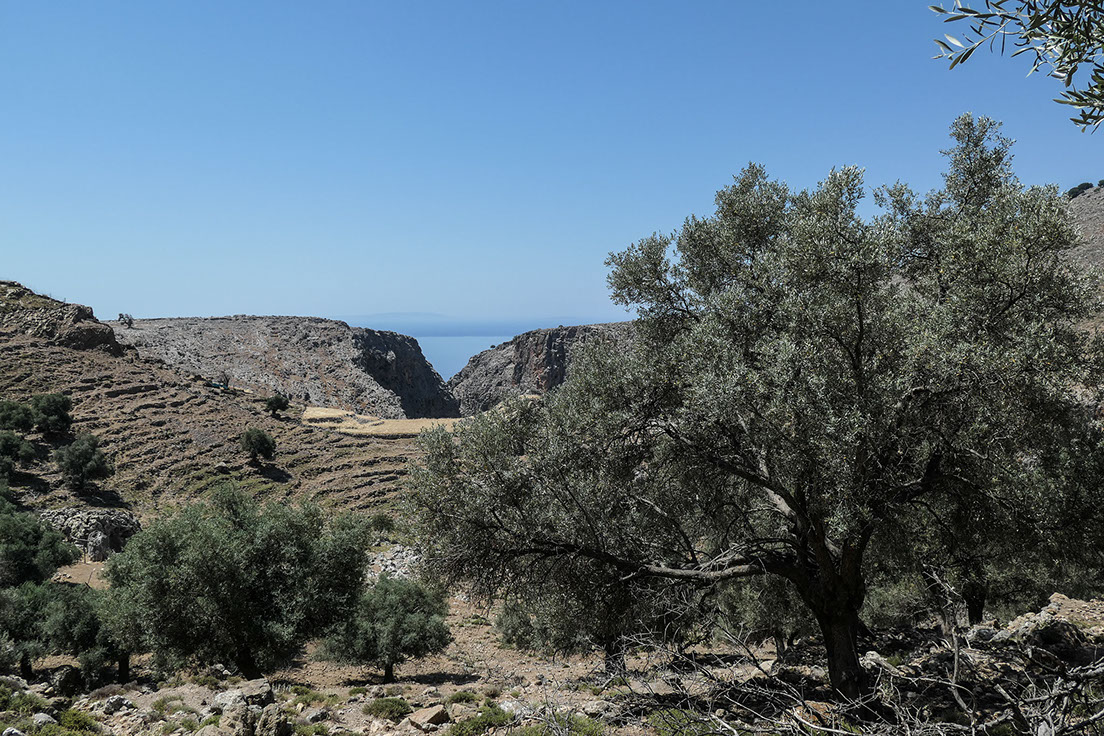
Olive trees and Ancient Terraces above Livaniana
ISO 125 1/1000th f5.6 27mm Leica C-Lux
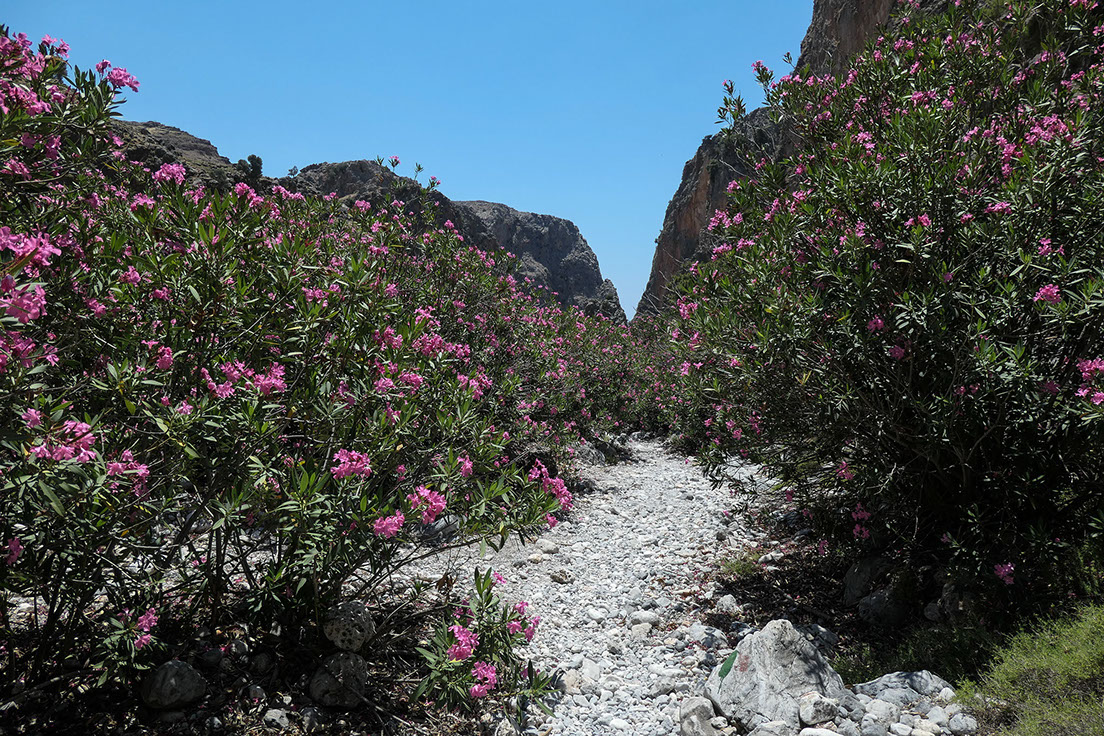
Oleander Trees in flower in the Aradhena Gorge
ISO 125 1/1000th f4.5 24mm Leica C-Lux
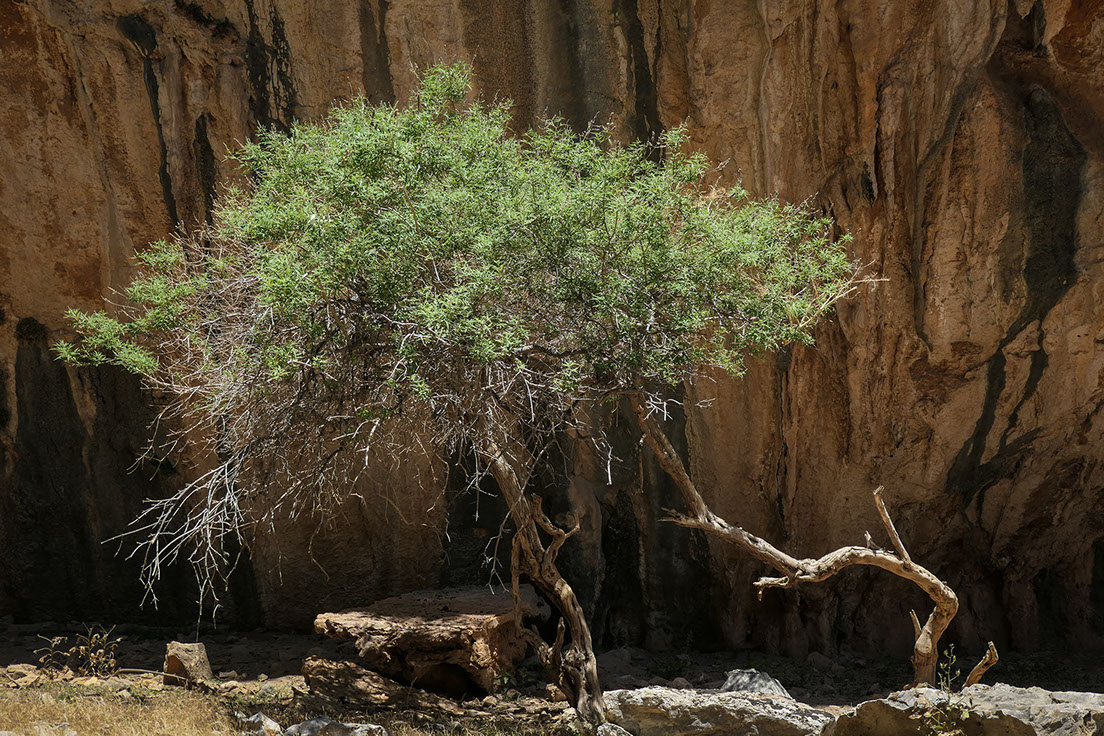
Twist and Turn (in the Aradhena Gorge)
ISO 125 1/800th f4 43mm Leica C-Lux
Battery Life and Firmware Considerations
Battery life has traditionally been a weak point of this kind of camera, but it seems to be pretty good on the Leica C-Lux. I had a spare battery with me every day, but I rarely used it, one battery was enough for 200-300 shots over a long period.
The camera comes with a plug in USB charger, but mine only had an American plug, so I used the portable USB charger I take with me to charge my phone and iPad, simply plugging in the camera - It seemed to recharge quite quickly, and the socket is a standard micro-USB type. Easy and Convenient.
Correction:.
I was informed by Leica when I received the camera, that with the final firmware it would shoot DNG files. However, I have now been informed that the shipping camera will support the Panasonic RWL file format instead (which will, of course, be supported in Lightroom and other Conversion Software).

Watermelon Lady (at Marmara beach)
ISO 125 1/800th f8 340mm Leica C-Lux
I decided that, to be safe, I would shoot only highest quality jpg files, and would use Auto White balance. I didn't have time to investigate the different jpg settings, so I just left them as default.
I also like to tag images with GPS data - especially on a trip like this. The camera doesn't have GPS built in, but it does have both WiFi, and low-power bluetooth. This will allow you to have the camera permanently connected to your phone (iOS or Android) and you will be able to tag the location information on to the files with the GPS information from the phone.
I've used this technique with the Panasonic G9, and it works extremely well. I assume that the technology is the same on the C-Lux and that this will work even when the camera is in sleep mode.
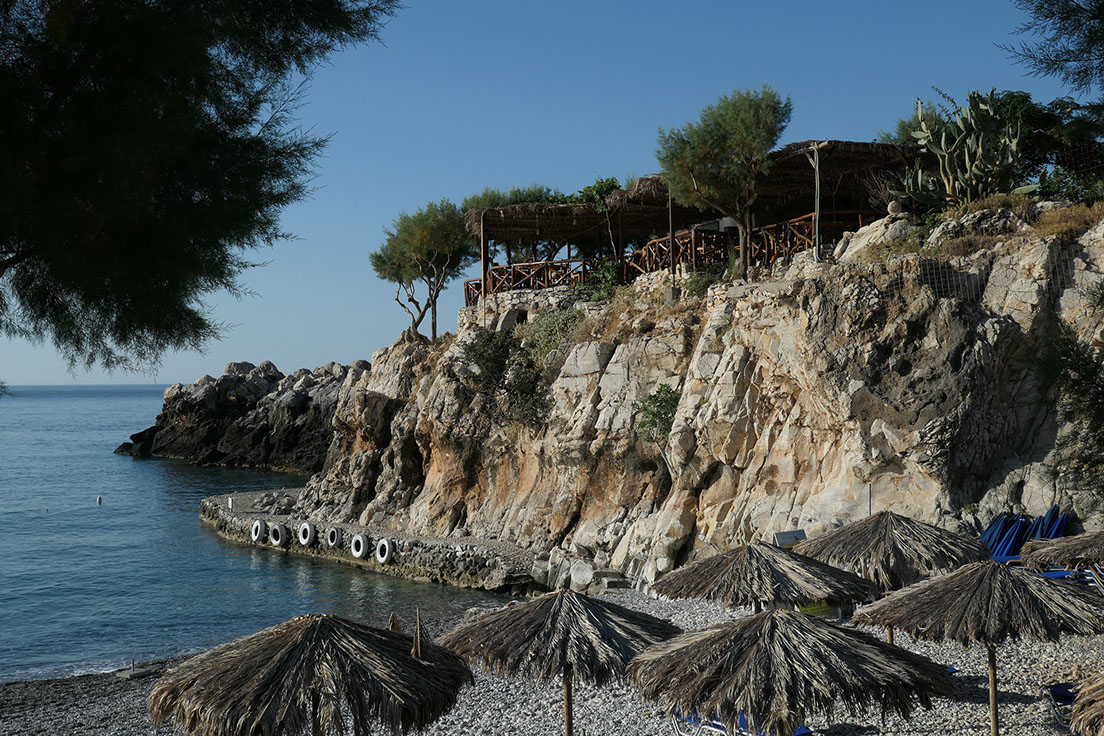
Marmara Beach and Taverna (time for breakfast!)
ISO 125 1/800th f6.3 43mm Leica C-Lux
Marmara
Marmara beach is where the Aradhena gorge meets the sea, and it's certainly a welcome sight after the long and difficult walk down the gorge. It's a small beach with pea shingle, and it can get crowded in the middle of the day, but before the boat from Loutro arrives (around 11.30) and after the last boat has gone (5.30) it's peaceful and lovely.
There are magnificent marble cliffs on either side of the beach, these have small caves you can swim into on a calm day.
The taverna has been run by Edmond for 15 years and has improved every year. They have 3 or 4 rooms with sea views behind the taverna (but you'll need to book a long time in advance!). The food is really excellent and the service friendly and relaxed.
The big decision to be made after a walk down the gorge is which comes first . . . the beer or the swim!
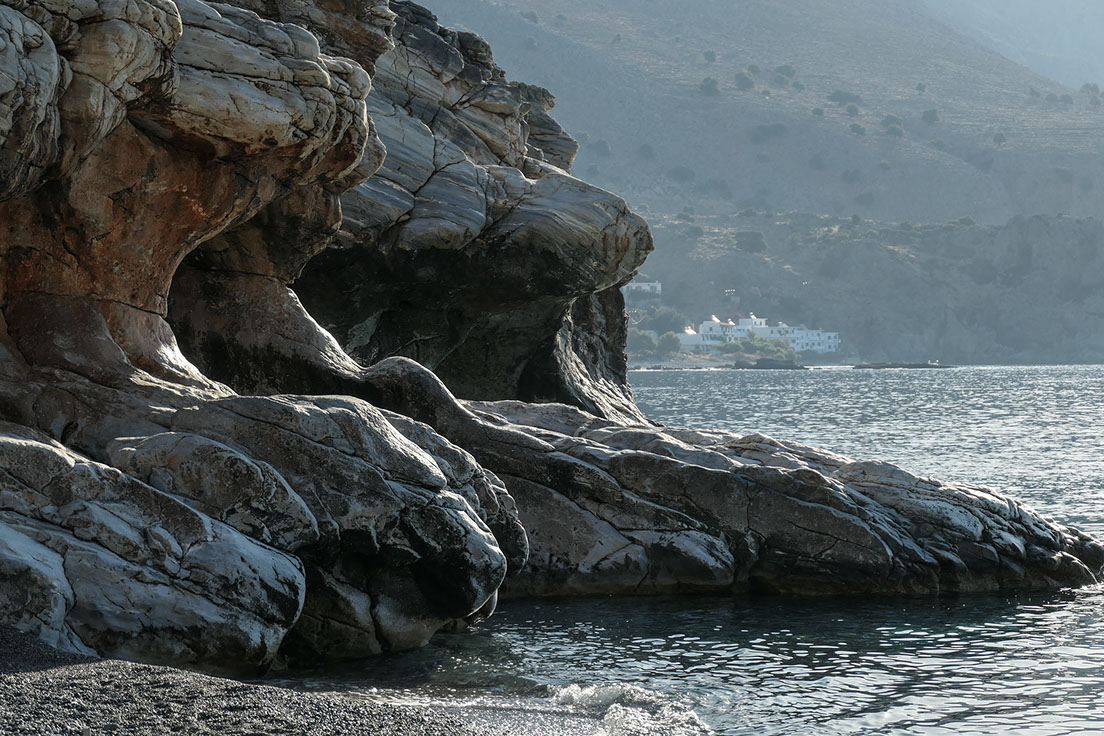
Marmara Beach (with Likkos and the Small Paradise in the distance)
ISO 125 1/640th f5.2 43mm Leica C-Lux
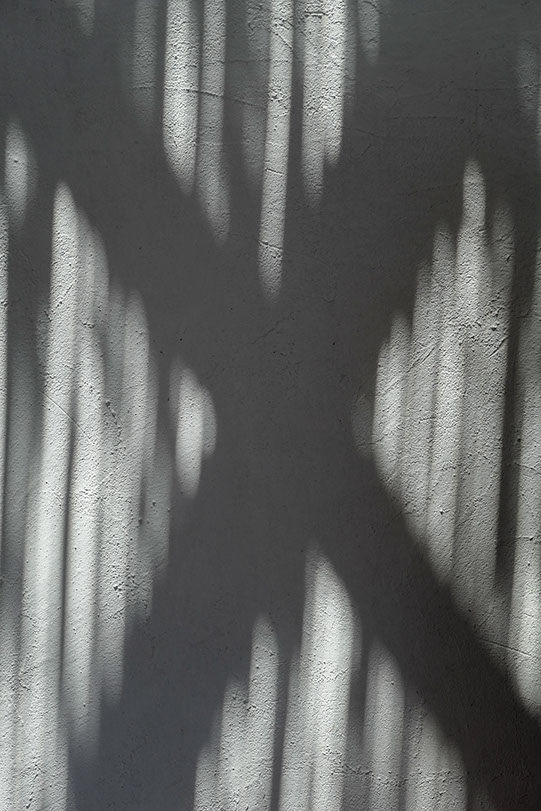
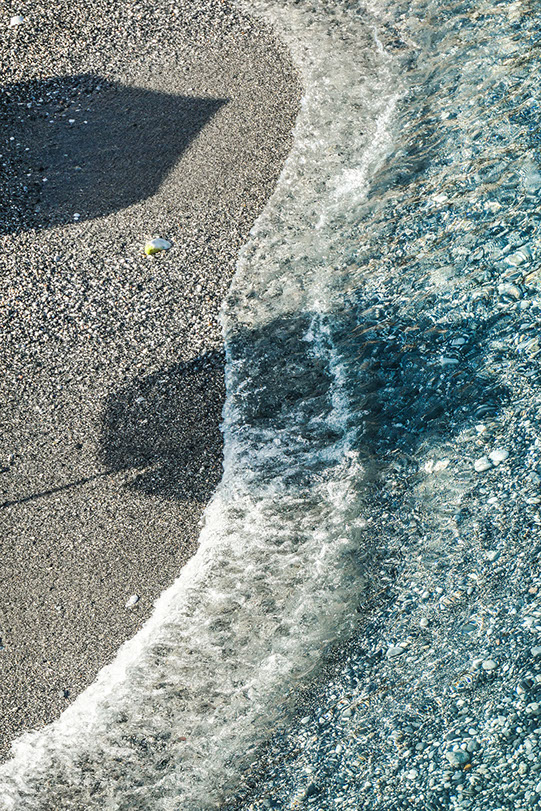
Criss Cross
ISO 125 1/400th f4.5 62mm Leica C-Lux
Marmara Beach
ISO 125 1/250th f6.1 205mm Leica C-Lux
Image Quality
I haven't seen the best the camera can do, as I've been limited to jpg files, but I did notice in one of the reviews that the reviewer (who really liked the camera and the image quality) said that the pictures were good enough for any kind of web / on screen application. Well, I've printed them out to A2+, and unless you want to look from a foot away with a loupe they are just fine . . . and that's from jpg files.
The dynamic range seems good, there is no tendency to blow out highlights or to block shadows. Almost everything I shot was at 800 ISO or below, but 1600 looks good as well.
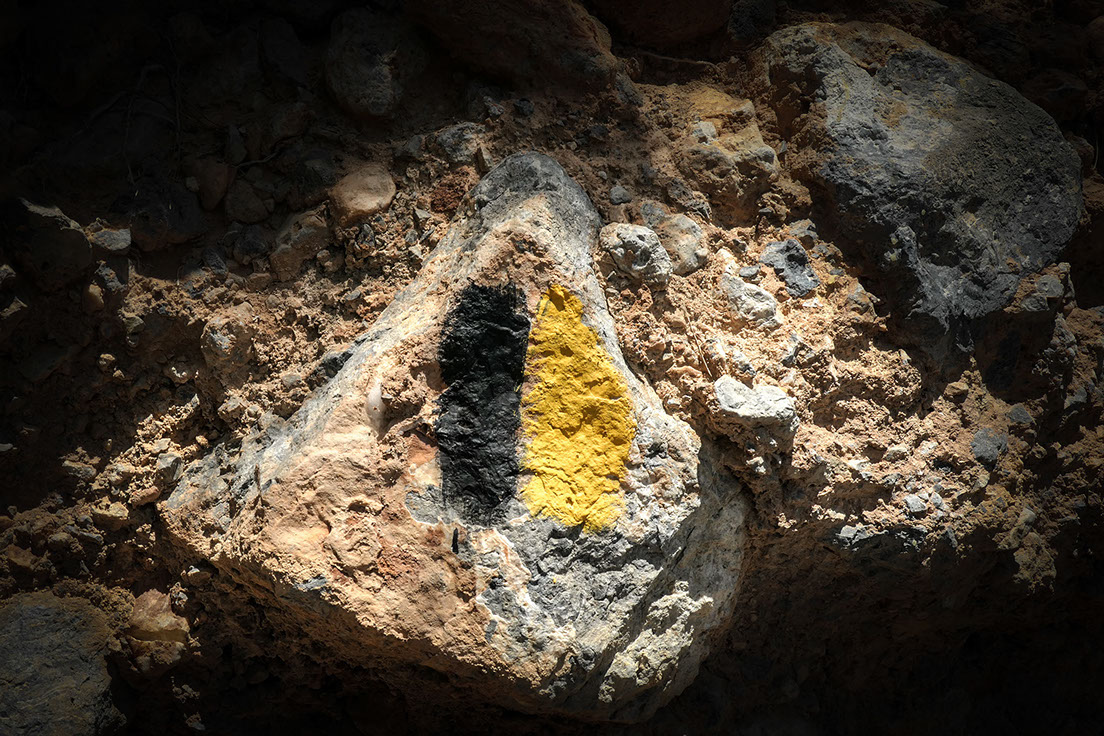
E4 Coastal route marker
ISO 125 1/800th f5.6 44mm Leica C-Lux
Of course, the relatively slow lens is a disadvantage, but the image stabilisation is excellent which helps to keep the ISO down. As is normal with this kind of lens, it's best within the standard range - I could see a little fall off at 360mm, but it was still perfectly usable.
Although I understand that sensor technology has come on over the last few years, I was, frankly, rather startled at how good the image quality actually is.
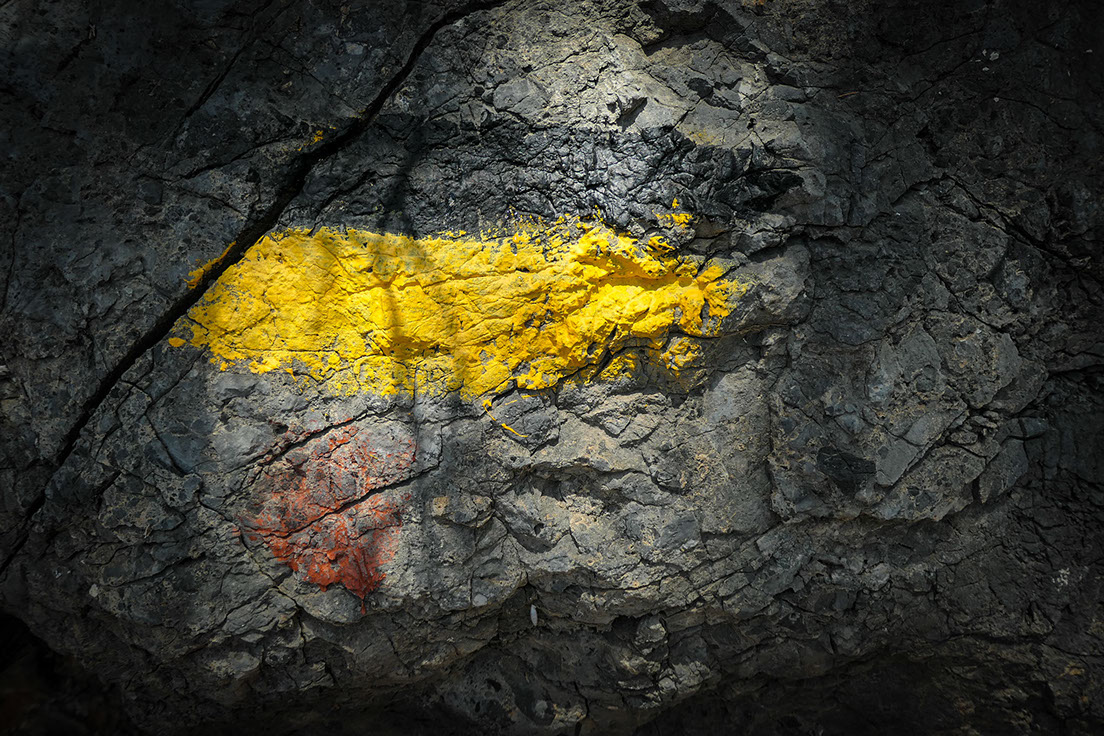
E4 Coastal route marker
ISO 125 1/800th f3.3 24mm Leica C-Lux
Agios Pavlos
Beyond Marmara beach the E4 coastal path climbs steeply onto a narrow plateau about a quarter of the way up the 600 metre cliff. The hot and exposed path follows the coast for about 6 kilometres and then suddenly you find yourself in a deliciously fragrant pine wood above the long beach of Agios Pavlos. The beach is black sand, and the sea a wonderful milky blue, you can either thread your way to the beach in a gully or walk through the pine woodlands just above to the chapel and taverna.
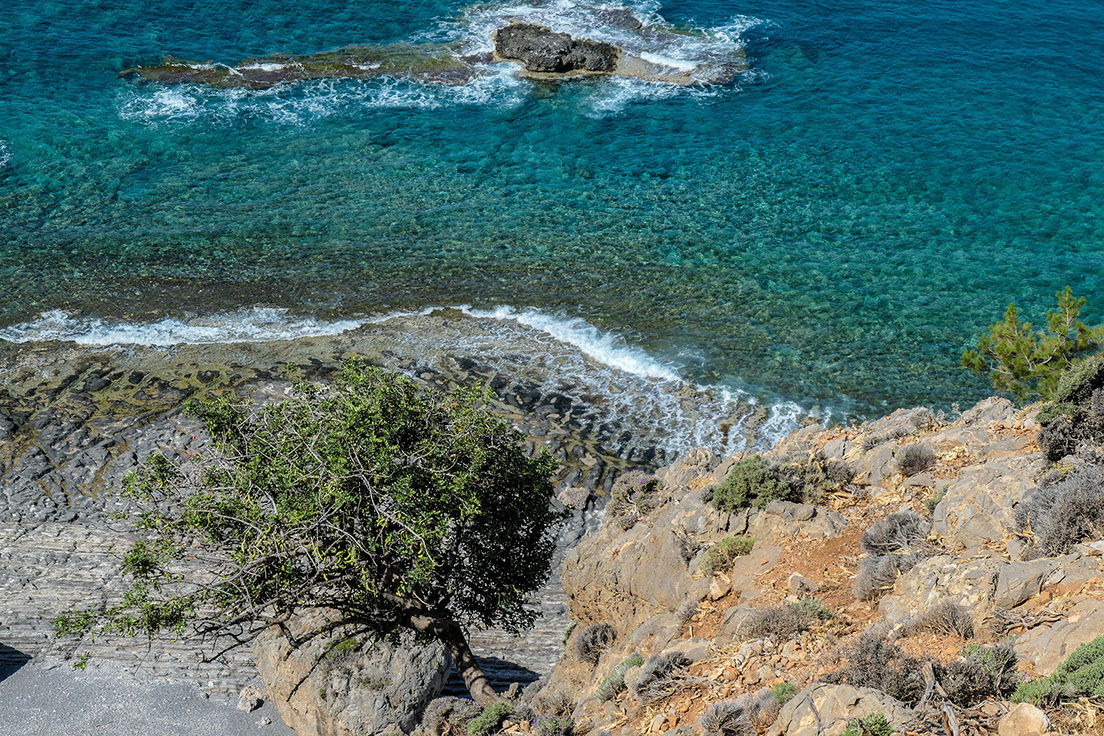
Between Marmara and Agios Pavlos
ISO 125 1/800th f4.8 79mm Leica C-Lux
The chapel was built in the 11th century, there are still some frescoes visible, but they are in rather poor shape, but this doesn't detract from the charm of the building.
The taverna is perhaps the most laid-back place you'll ever find. Giorgos will sell you a beer and give you a simple and delicious meal whilst you are entertained with really great music.
Allow an hour and a half for the hot sandy walk on to Agia Roumeli, where you can get the ferry back to Loutro (and marvel at how far you've walked!) or on to Paleochora.
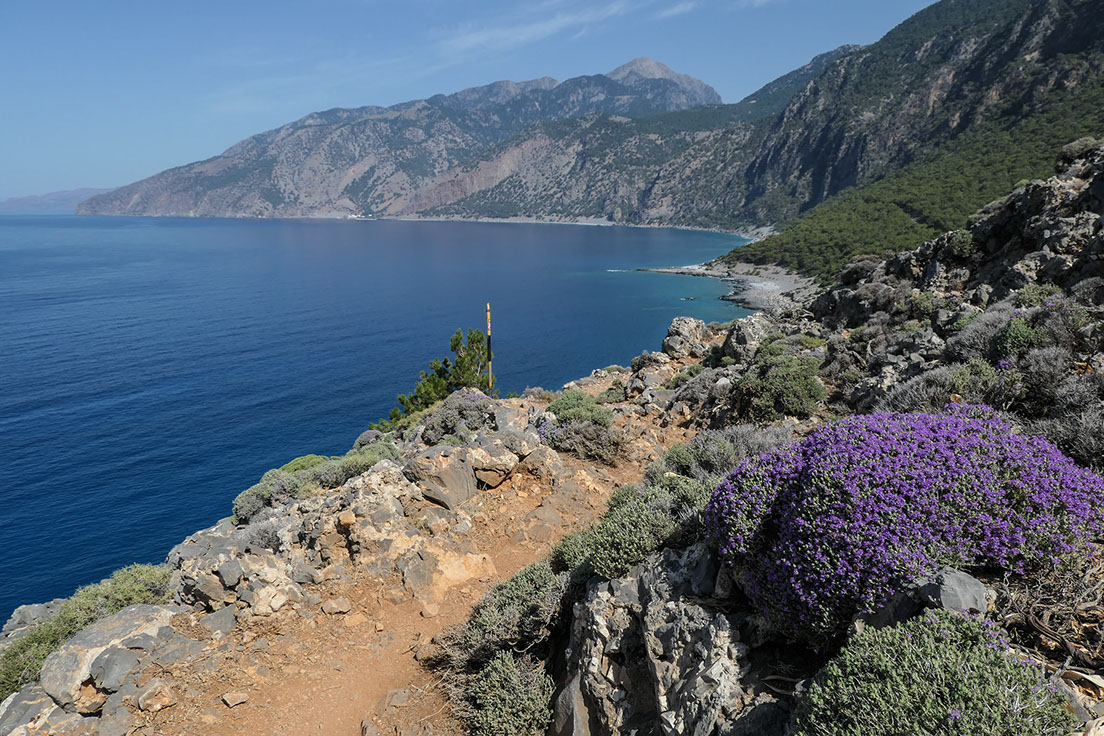
Buzzing Bees on the Wild Mountain Thyme - and the view on to Agios Pavlos and Roumeli
ISO 125 1/1000th f5.6 24mm Leica C-Lux
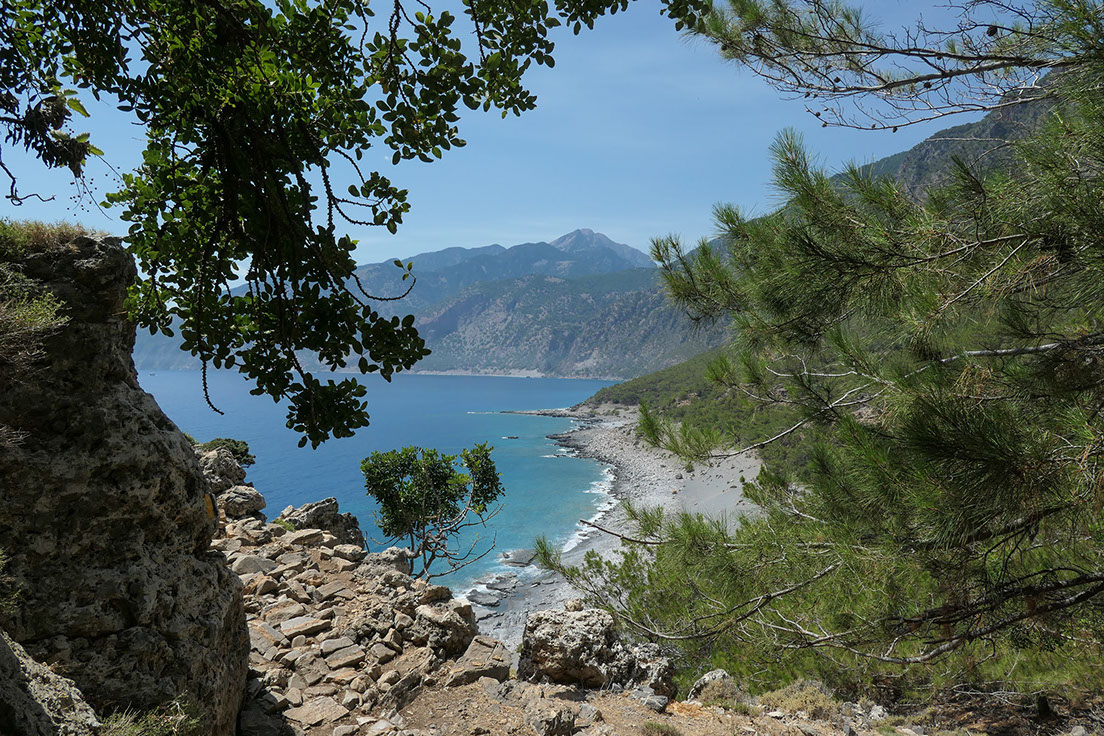
Fragrant Pine Woodland above the beach at Agios Pavlos
ISO 125 1/800th f5.6 24mm Leica C-Lux
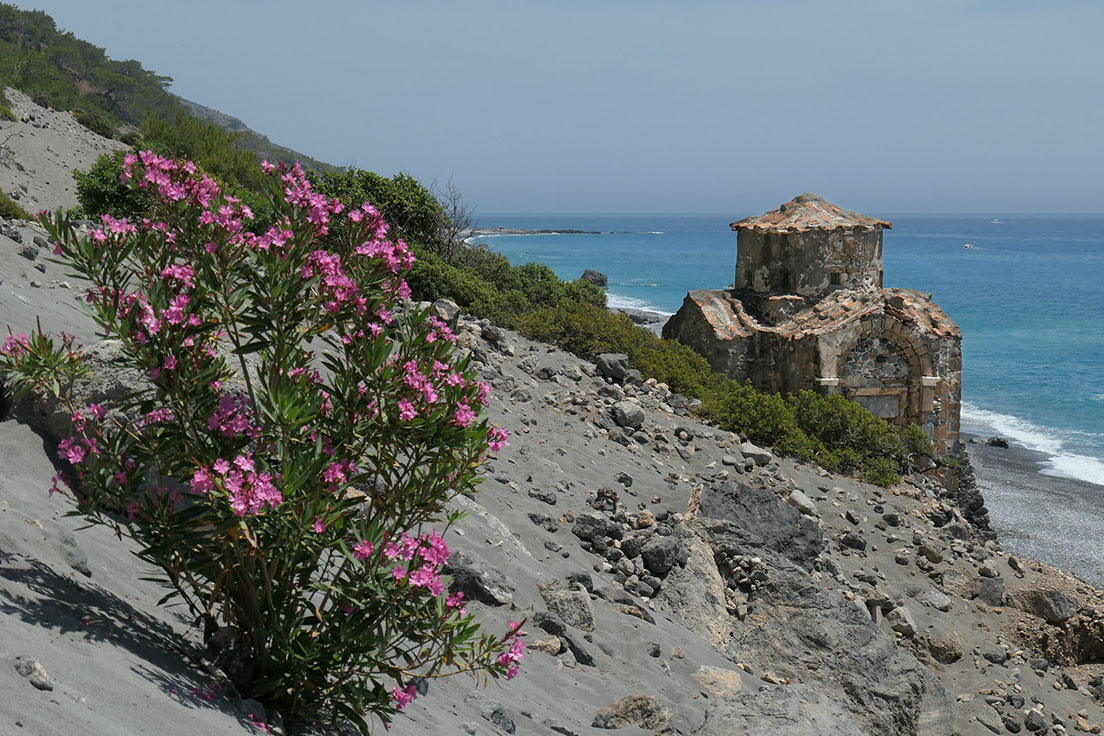
the 11th century chapel at Agios Pavlos
ISO 125 1/1000th f6.3 69mm Leica C-Lux
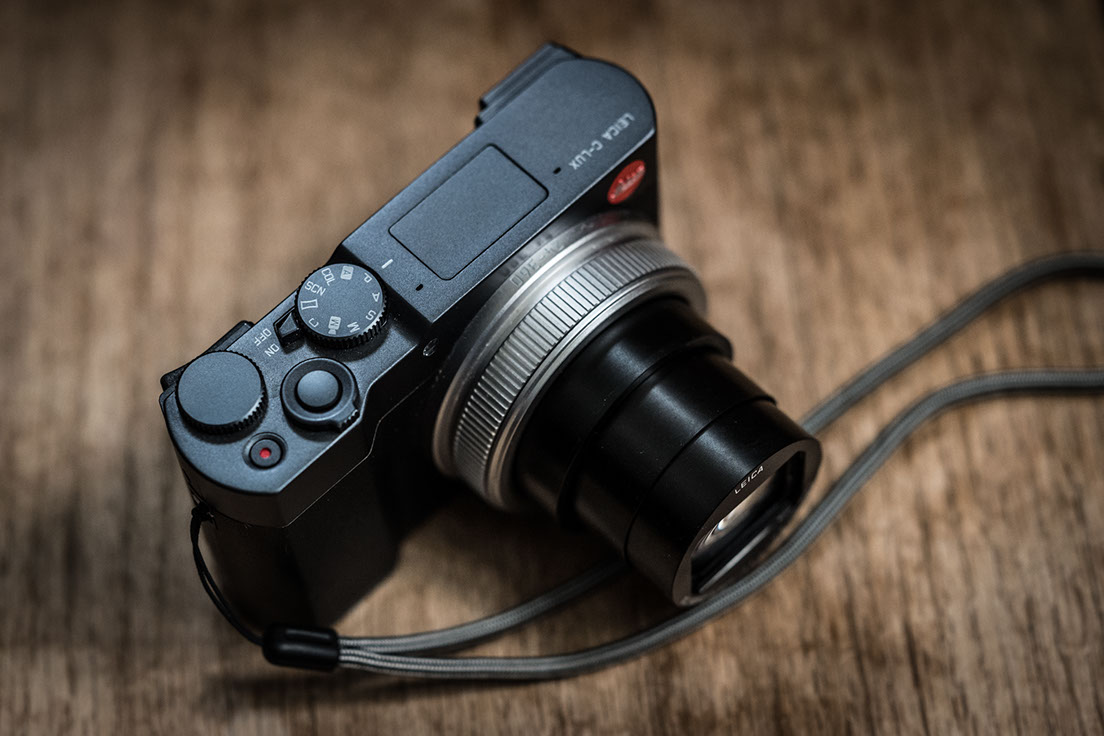
The C-Lux after a week shooting in Crete (switched on)
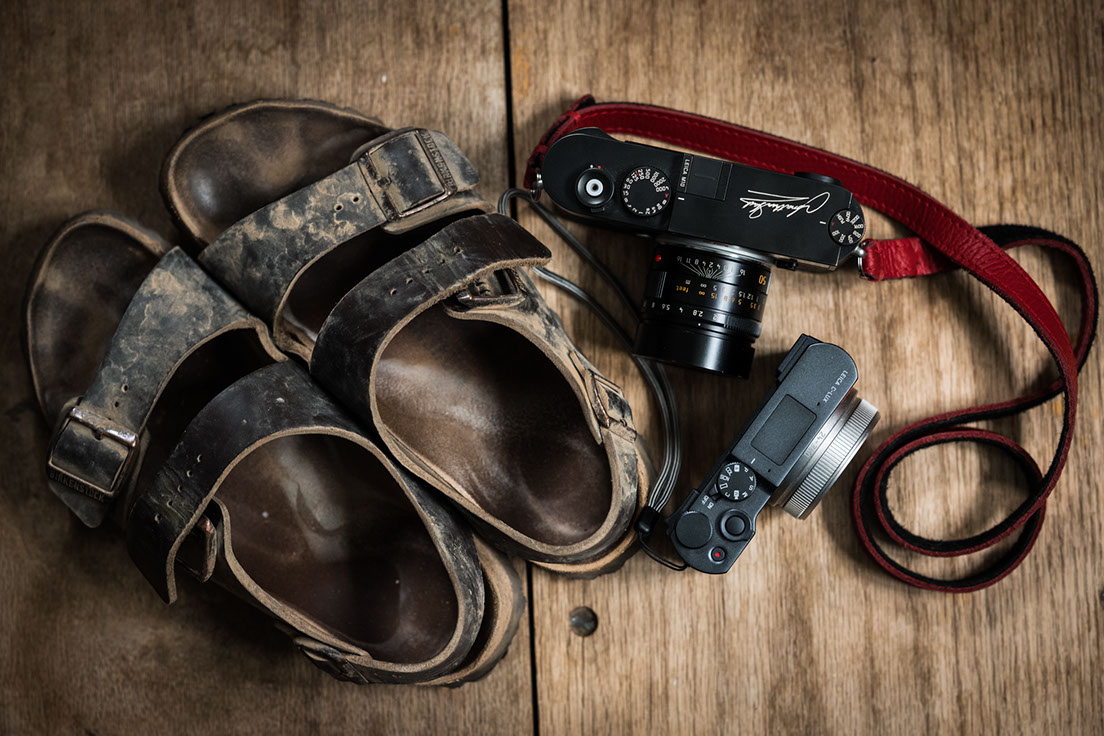
The aftermath - Leica C-Lux turned off - thanks to Evris at Rock'n Roll straps for the lovely M10 strap.
Conclusion
Leica's previous C-Lux offerings have been style conscious point and shoot cameras with small sensors and form factors. Fun, but fairly limited in terms of image quality and performance. The sensor on the previous C (typ 112) was 1/1.7" (7.6 x 5.7mm) whereas the sensor on the new camera is 1" (12.8 x 9.6mm), in the same territory as the µ43 sensor in the D-Lux.
Since 2013 when the last C camera arrived sensor technology (especially for smaller sensors) has improved by leaps and bounds . Put all this together with the improvements in AF technology image stabilisation and lens design and suddenly you have a serious contender.
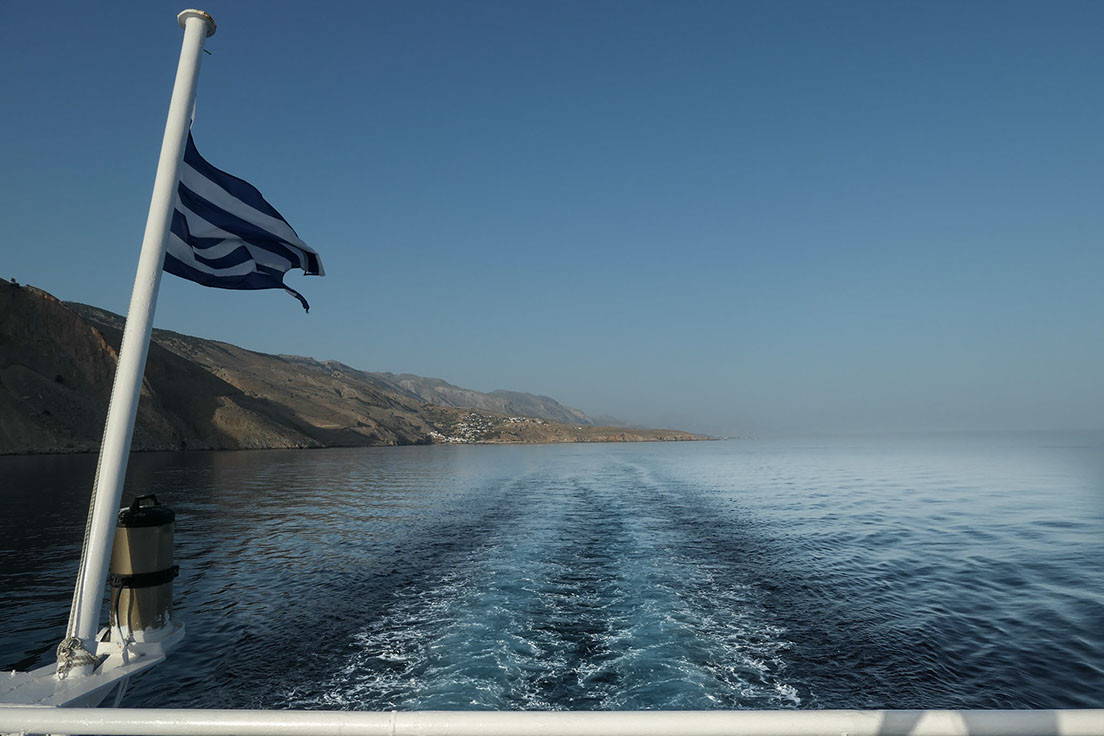
On the Daskiologiannis sailing between Sfakia and Loutro
ISO 125 1/1000th f6.3 24mm Leica C-Lux
I went on our walking trip in Crete with a bag of cameras and lenses, expecting to use the C-Lux some of the time, but in the final analysis I took around 1500 photos. . 10 or so with the iPhone X . . 20 with the M10 . . 25 with the Panasonic G9 and the rest with the C-Lux, most of the time I was carrying a couple of kg of equipment which I simply didn't use!
Okay, magic doesn't happen, and many of these images would have been better quality if I'd been shooting with my SL or my M10; but there are images that I caught as a function of the 24-360 zoom range and excellent AF and image stabilisation which I simply would have missed with the "better" cameras.
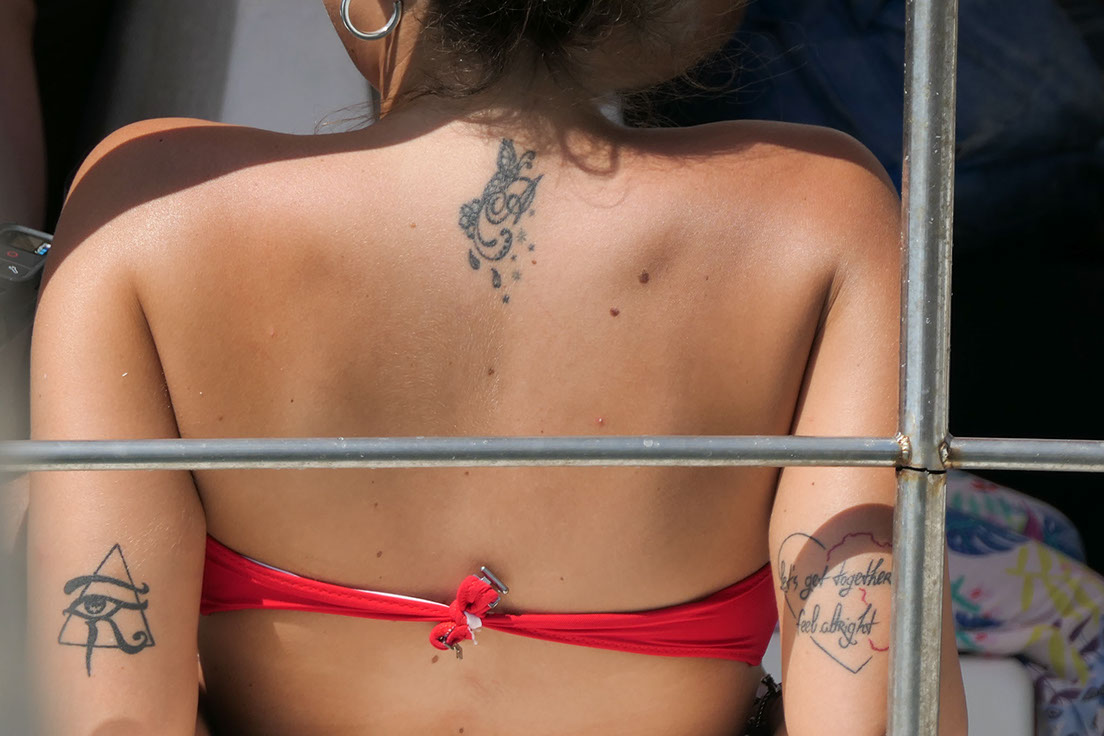
Let's get together and feel alright
ISO 125 1/800th f6.3 506mm (with digital zoom!) Leica C-Lux
With previous Panasonic / Leica collaborations there has always been the argument that you should save some money and eschew the Leica red dot, but with Leica's sensible pricing on the C-Lux suddenly it seems that the improved resale value is probably worth more than the small difference in price. Add to that the 'midnight blue' camera I've been shooting with is rather a dashing object (and the blue leather half case that I don't have looks great as well).
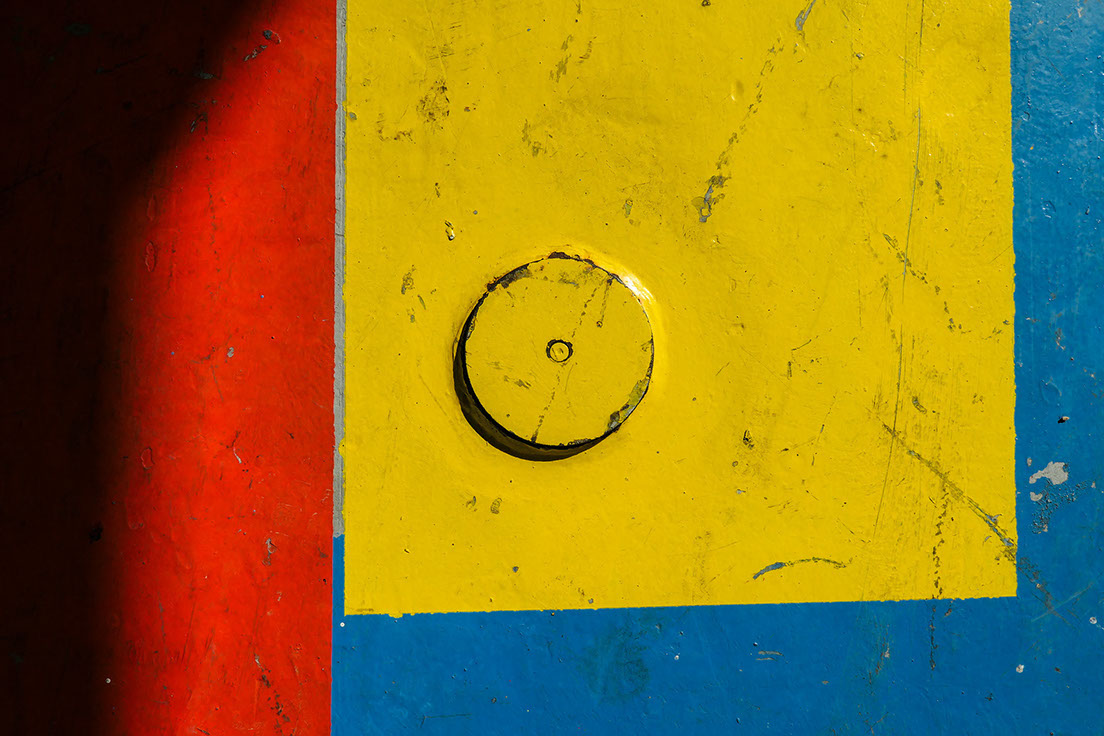
Red, Yellow and Blue
ISO 125 1/1000th f6.3 35mm Leica C-Lux
The C-Lux is perhaps not a major step forward for Leica, but like most great products it seems to be more than the sum of its parts. I would predict that it'll find a lot of friends amongst street photographers who zone focus with small apertures, and it really does seem to be a great travel camera if you want to travel light.
On Friday I will have had the C-Lux for 2 weeks, and it will be time to hand it back to Leica. I haven't owned a compact zoom camera for more than 5 years, but I'm seriously considering buying the lovely little C-Lux.
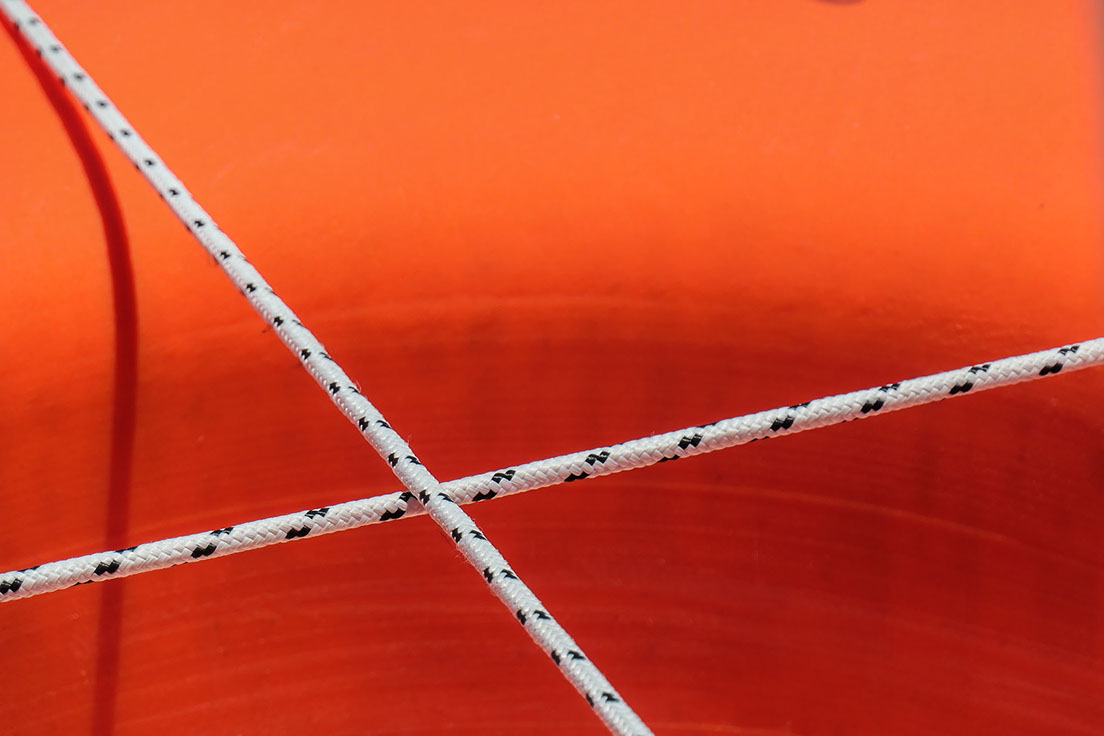
Criss Cross II
ISO 125 1/1000th f6.3 35mm Leica C-Lux
